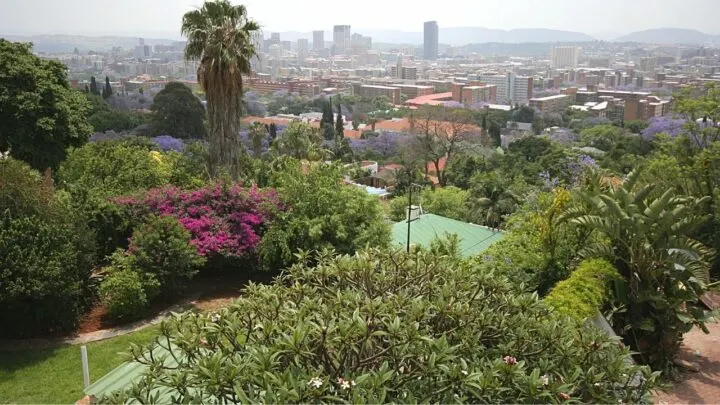Plants are a natural beautification element used in various places such as homes or neighborhood areas.
Plants can be planted almost anywhere in a house or a garden.
However, more than ten million species of plants have different characteristics and natural preferences, making them adapt to certain atmospheric and physical conditions.
Mentioned below are plants that can be placed on the north side of the house.
The north-facing side of the house gets less bright direct light, more shade, and less warmth during the day compared to the other directions.
30 Plants for North-Facing Side of the House
- Osmunda Regalis
- Matteuccia Struthiopteris
- Polypody
- Saw-toothed Azara
- Cyrtomium Falcatum
- Hydrangea Integrifolia
- Osmanthus Delavayi
- Lathyrus Latifolius
- Tiarella Cordifolia
- Heuchera
- Astilbe
- Digitalis
- Lamium Maculatum
- Virginia Creeper
- Albéric Barbier
- Alchemilla
- Pulmonaria
- Itea Ilicifolia
- Madame Alfred Carrière’
- Hedera helix ‘Ceridwen’
- Pyracantha Saphyr Rouge
- Celastrus Orbiculatus
- Euonymus Fortune
- Begonia Semperflorens Cultorum
- Impatiens Walleriana
- Lamprocapnos Spectabilis
- Vinca Minor
- Fuchsia
- Rhododendrons
- Fragrant Catkins
Read more about plants for north-facing gardens.
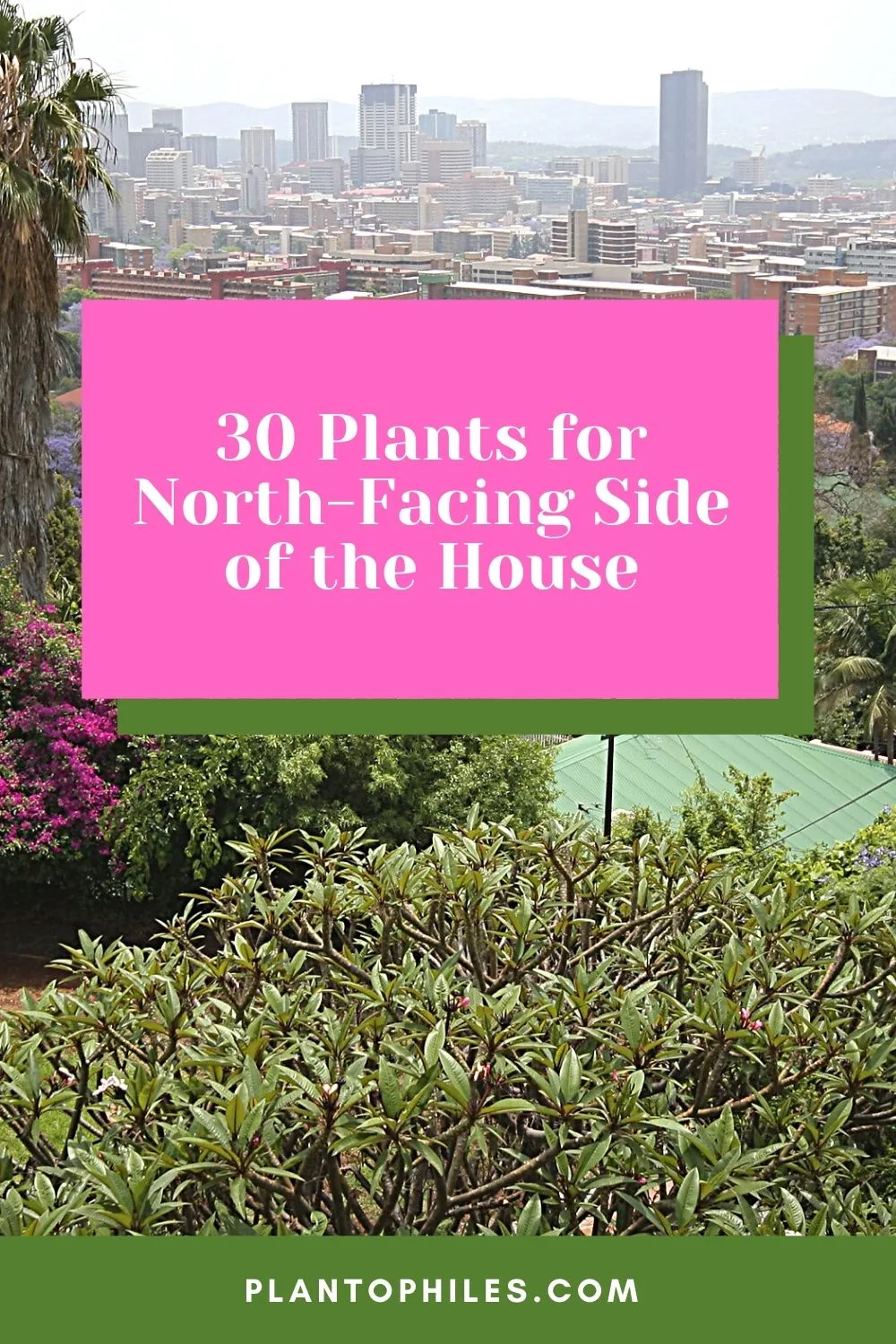
30 Plants for North-Facing Side of the House
Table of Contents
30 Plants for North-Facing Side of the House
1. Osmunda Regalis
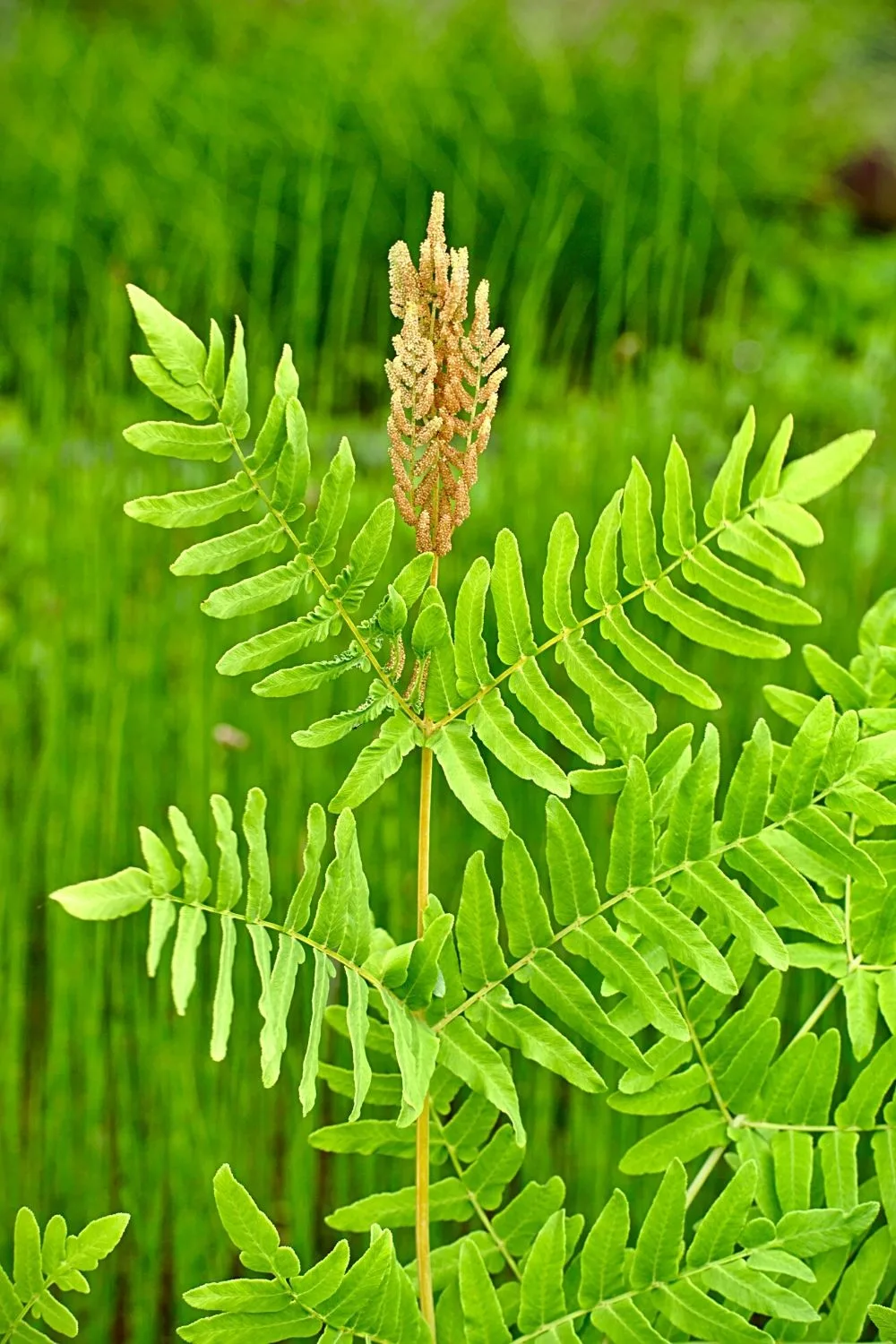
Osmunda Regalis is one of the moisture-loving plants that you can place on the north-facing side of your house
Osmunda Regalis is from the family of Royal Ferns, which can be found in rich volumes in Africa, Europe, and Asian regions according to the University of Oxford.
Their bright and striking green color adds charm to the entire collection of plants in a garden. It can also be placed near ponds or water bodies as they are among the few moisture-loving plants.
They can be placed on shady beds, borders, or surfaces, as they enjoy themselves in the shade and covered areas.
Its binomial nomenclature and basic plant care requirements include:
- Scientific name: Royal Fern
- Family: Osmundaceae
- Temperature: 62 – 70˚F (16.7 – 21˚C)
- Fertilizer: Balanced fertilizers with the required proportion of micronutrients with 200ppm Nitrogen
- pH: 4 to 7
- Soil: Acidic and moist soils containing ample organic matter
- Lighting: indirect lightning through openings
- Growth rate: Slow growth rate depending upon optimal conditions
- Humidity: up to 10% relative humidity would be ideal
2. Matteuccia Struthiopteris

Matteuccia Struthiopteris is one of the best ferns that you can plant in the north-facing side of your house
Matteuccia Struthiopteris are also among the types of ferns having long and feathery Ostrich plumes.
It’s among the top preferences for individuals who love having ferns in their north-facing gardens.
It can also be grown in volume and cooked under required conditions before eating. It prefers staying in shady and moist corners or spots in the house.
Its binomial nomenclature and basic plant care requirements include:
- Scientific name: Shuttlecock Fern
- Family: Onocleaceae
- Temperature: 55°- 80°F (12-26 °C)
- Fertilizer: Balanced fertilizers keeps the foliage green throughout the season
- pH: 4 to 7
- Soil: Prefers clayey, loamy, and sandy soils
- Lighting: Doesn’t prefer getting exposed to unwanted sunlight during the day
- Growth rate: Growth rate depends upon outdoor conditions. Can grow in 7-10 days
- Humidity: 10% or more
3. Polypody
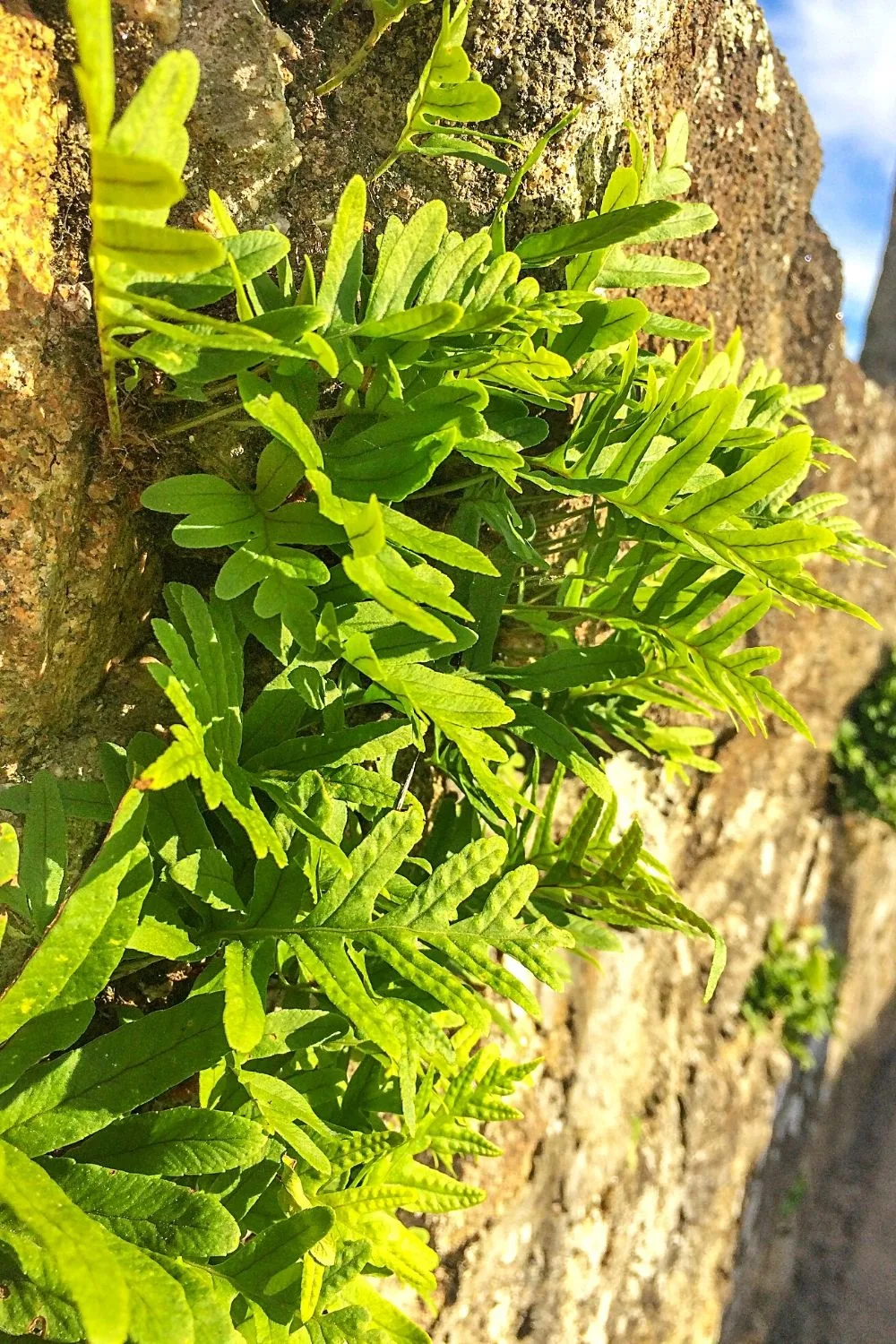
Polypody is a low-maintenance plant that will thrive in the north-facing side of the house
Polypodium Vulgare, also known as Polypody, is among the category of ferns that likes to grow alone, enjoying their personal space.
It was also used as an Herbal medicine in early European days for the treatment of indigestion, hepatitis, and decreased appetite.
Polypods are among the few plants that don’t require regular maintenance.
Its binomial nomenclature and basic plant care requirements include:
- Scientific name: Polypodium vulgare
- Family: Polypodiaceae
- Temperature: 18-25 °C
- Fertilizer: Can be fertilized between spring and autumn for better nourishment and growth
- pH: 7-9
- Soil: Chalk, Loam, and Sandy Soils
- Lighting: Can be placed in full sun or partially shaded positions or openings
- Growth rate: Takes 5-10 years to reach its ultimate height
- Humidity: 10-20%
4. Saw-toothed Azara
Azara Serrata is an evergreen plant having no such complex requirements for growing. It requires deep soil throughout the year.
Moreover, it’s best for the north-facing gardens, as their lamina and openings don’t prefer sunlight to strike their surfaces.
It has an evergreen lamina with strikingly elegant, serrated edges. During hot summers, one would observe goldish yellow flowers growing from it.
Its binomial nomenclature and basic plant care requirements include:
- Scientific name: Azara serrata
- Family: Salicaceae
- Temperature: -10- 15°C
- Fertilizer: Can be applied depending upon climatic and regional conditions
- pH: 7-9
- Soil: Boggy, Alkaline, Clayey, Acidic
- Lighting: Full Sun or partial shade
- Growth rate: Slow growth
- Humidity: Upto 10%
5. Cyrtomium falcatum
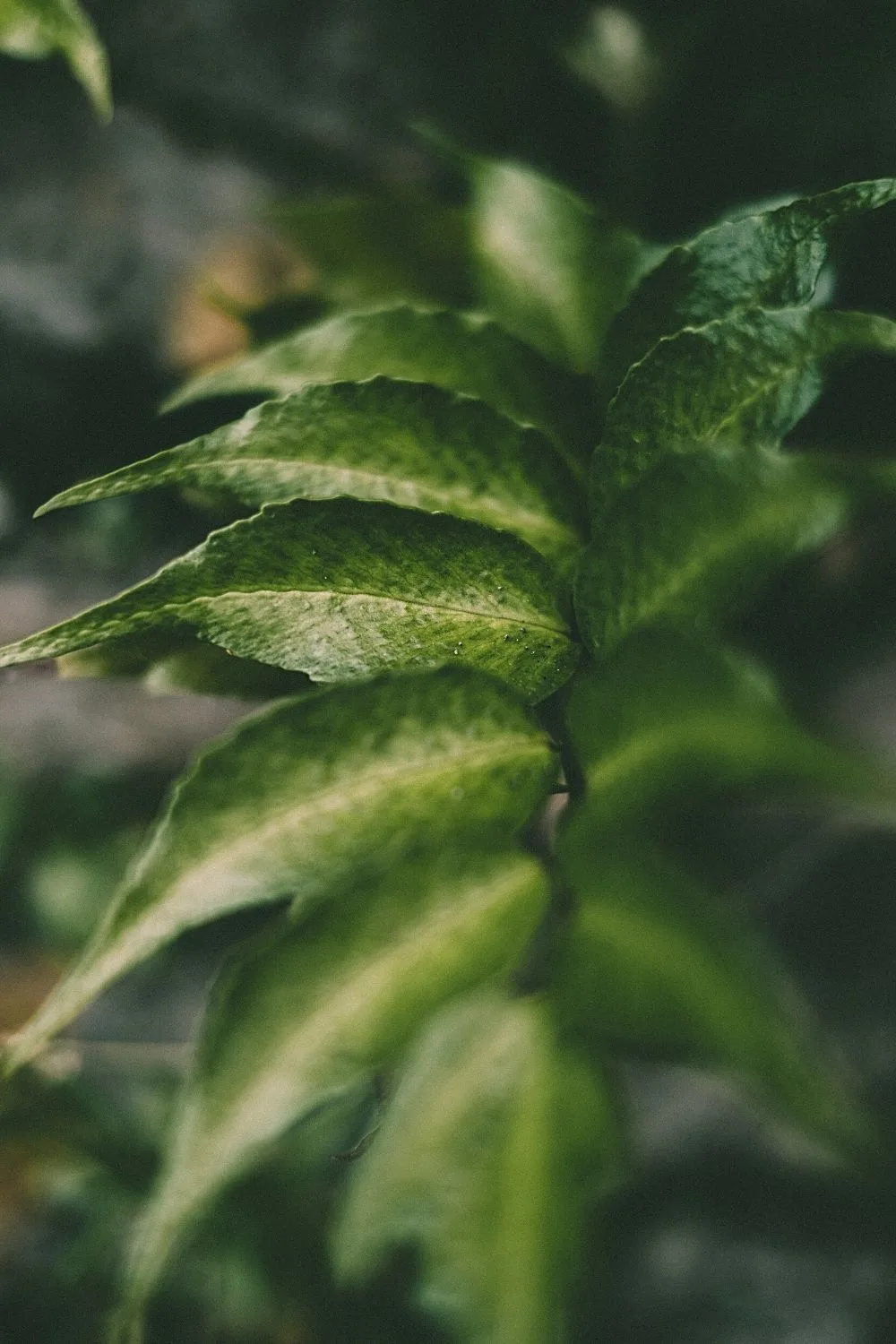
Cyrtomium Falcatum loves the shady and damp spots offered by the north-facing side of the house
Cyrtomium falcatum is also known as the Holly Fern, which prefers damp and dark spots throughout the year.
Ferns are specialized plants that prefer staying in the shade, as excessive sunlight can give them a damaging sunburn effect.
Its binomial nomenclature and basic plant care requirements include:
- Scientific name: Cyrtomium falcatum
- Family: Dryopteridaceae
- Temperature: -10° to 0°Fahrenheit (-23° to -18°C)
- Fertilizer: Can be applied depending upon climatic and regional conditions
- pH: 4-7
- Soil: Acidic soil with a high amount of nutrients
- Lighting: Partial or full shade
- Growth rate: Slow growth
- Humidity: Up to 50% relative humidity
6. Hydrangea Integrifolia
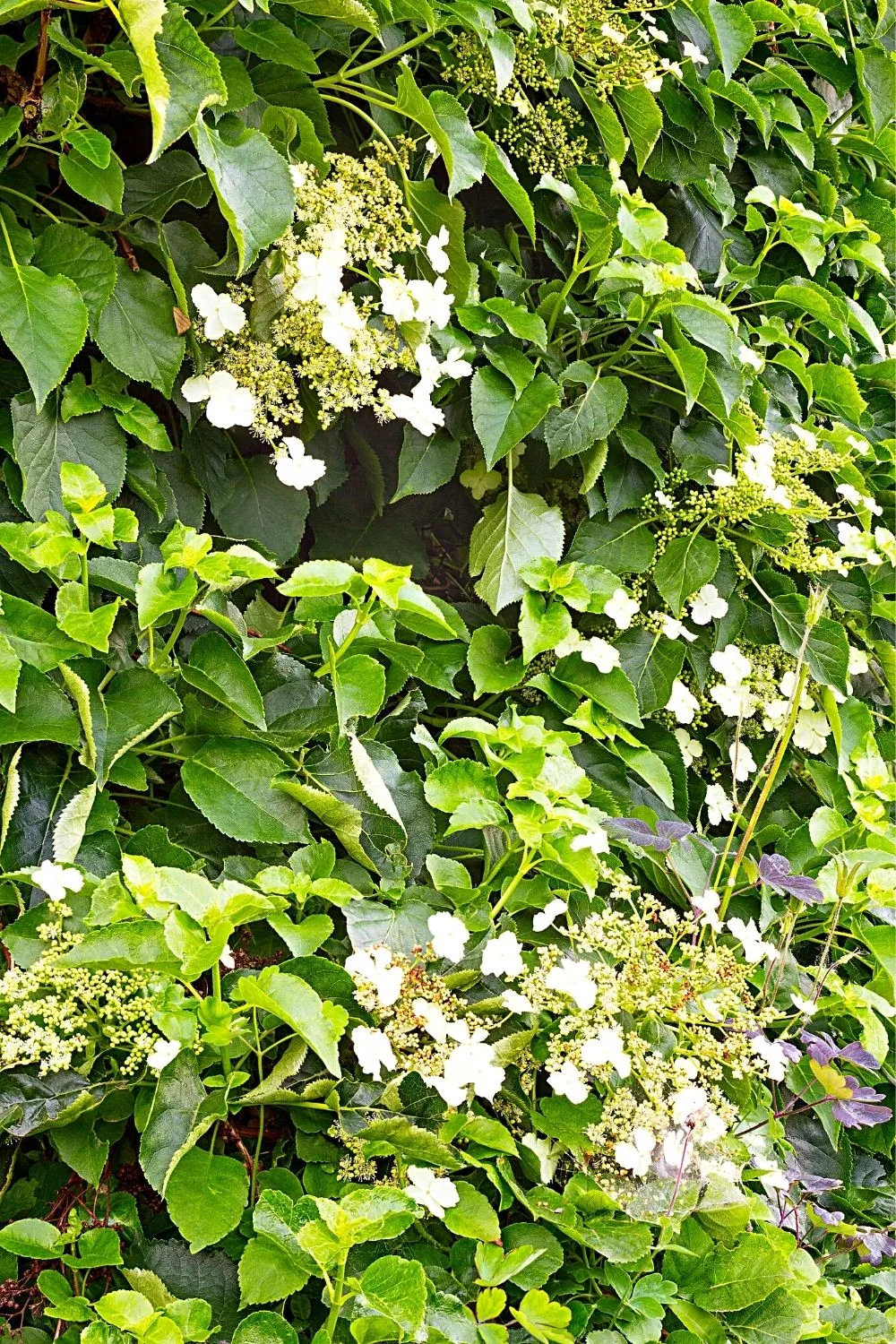
Hydrangea Integrifolia grows without complications in shady areas of north-facing side of the house
Hydrangea Integrifolia is an excellent décor and glazing plant which can grow on rough patches, fences, and walls, creating a beautiful and eye-catching surrounding.
Hydrangea Integrifolia survives in shady conditions without any complications or problems
Its binomial nomenclature and basic plant care requirements include:
- Scientific name: Hydrangea integrifolia
- Family: Hydrangeaceae
- Temperature: 18° to 24°C
- Fertilizer: Phosphorous based fertilizer during spring and summers
- pH: 6-6.2
- Soil: Well composed soil having the right amount of organic matter, preferably acidic soil type
- Lighting: Partial or full shade
- Growth rate: Slow growth; it may take upto 5-7 years for proper growth
- Humidity: Average humidity
7. Osmanthus Delavayi
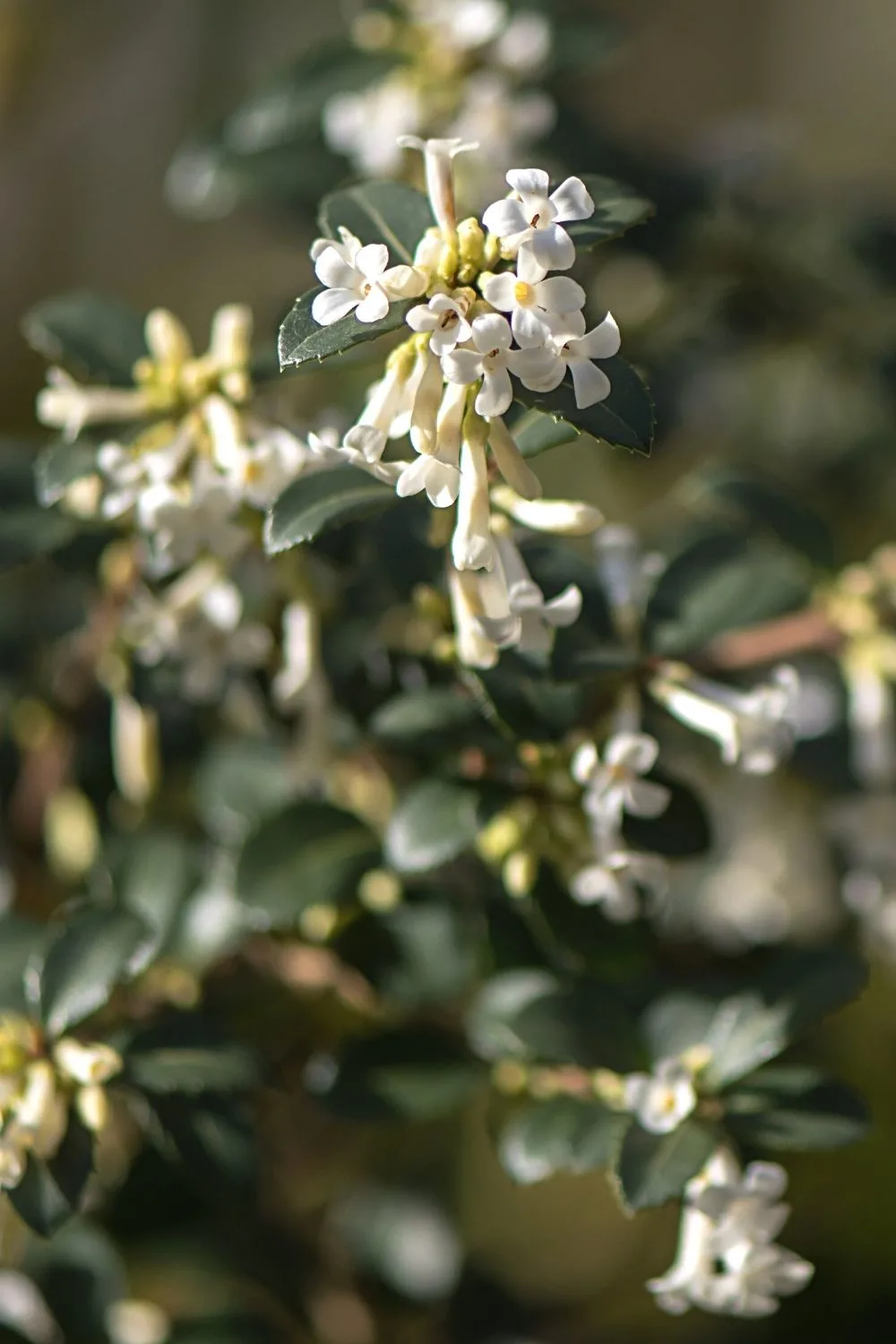
Osmanthus Delavayi thrives in minimal sunlight during the daytime in the north-facing side of the house
Osmanthus Delavayi is an evergreen plant type coming from the Olive family.
Osmanthus Delavayi thrives in minimum sunlight during the daytime. It can be hinged or clipped around corners or doors, making your garden look more pleasing and aesthetic.
Its binomial nomenclature and basic plant care requirements include:
- Scientific name: Osmanthus delavayi
- Family: Olives
- Temperature: -10- 0 degrees Fahrenheit
- Fertilizer: No fertilizer is required during winters. Recommended to apply fertilizers in the fall season.
- pH: 5-7
- Soil: Rich soil in organic matter
- Lighting: Partial or full shade
- Growth rate: Slow growth
- Humidity: Average humidity
8. Lathyrus Latifolius
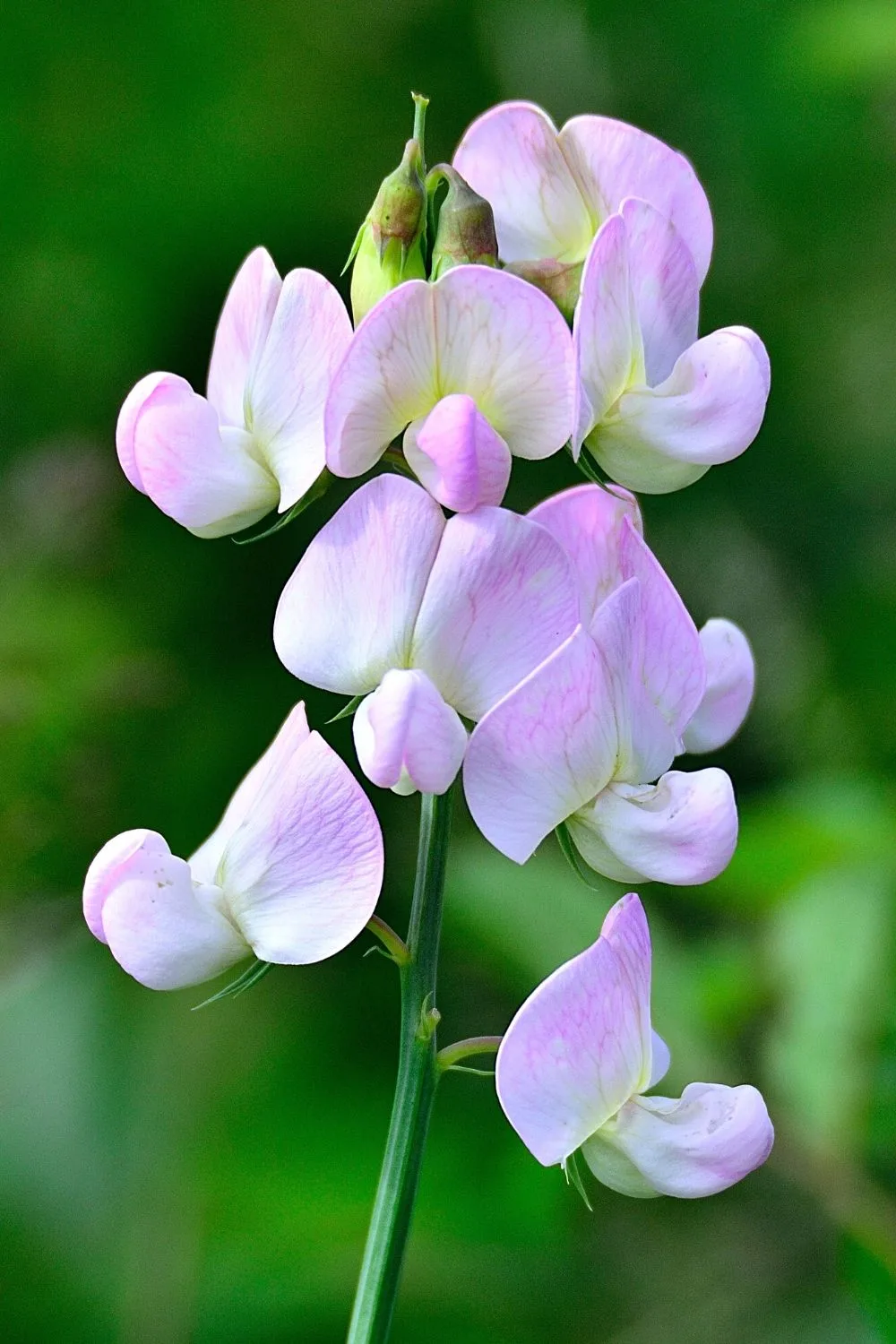
Lathyrus Latifolius can survive without a single ray of sunlight in the north-facing side of the house
Lathyrus Latifolius, also known as the White Pearl, is the charm of a north-facing garden.
With blossomed purplish flowers and green foliage, it adds beauty to the entire collection. It can go thriving without a single ray of sunshine throughout the year.
Its binomial nomenclature and basic plant care requirements include:
- Scientific name: Lathyrus latifolius
- Family: Legumes
- Temperature: -25- 66 degrees Fahrenheit
- Fertilizer: Water soluble fertilizers annually
- pH: Acidic, Alkaline, and Neutral
- Soil: Sandy, Loamy, Clayey, and Chalky
- Lighting: partial or light shade
- Growth rate: Slow growth
- Humidity: 70%
9. Tiarella Cordifolia
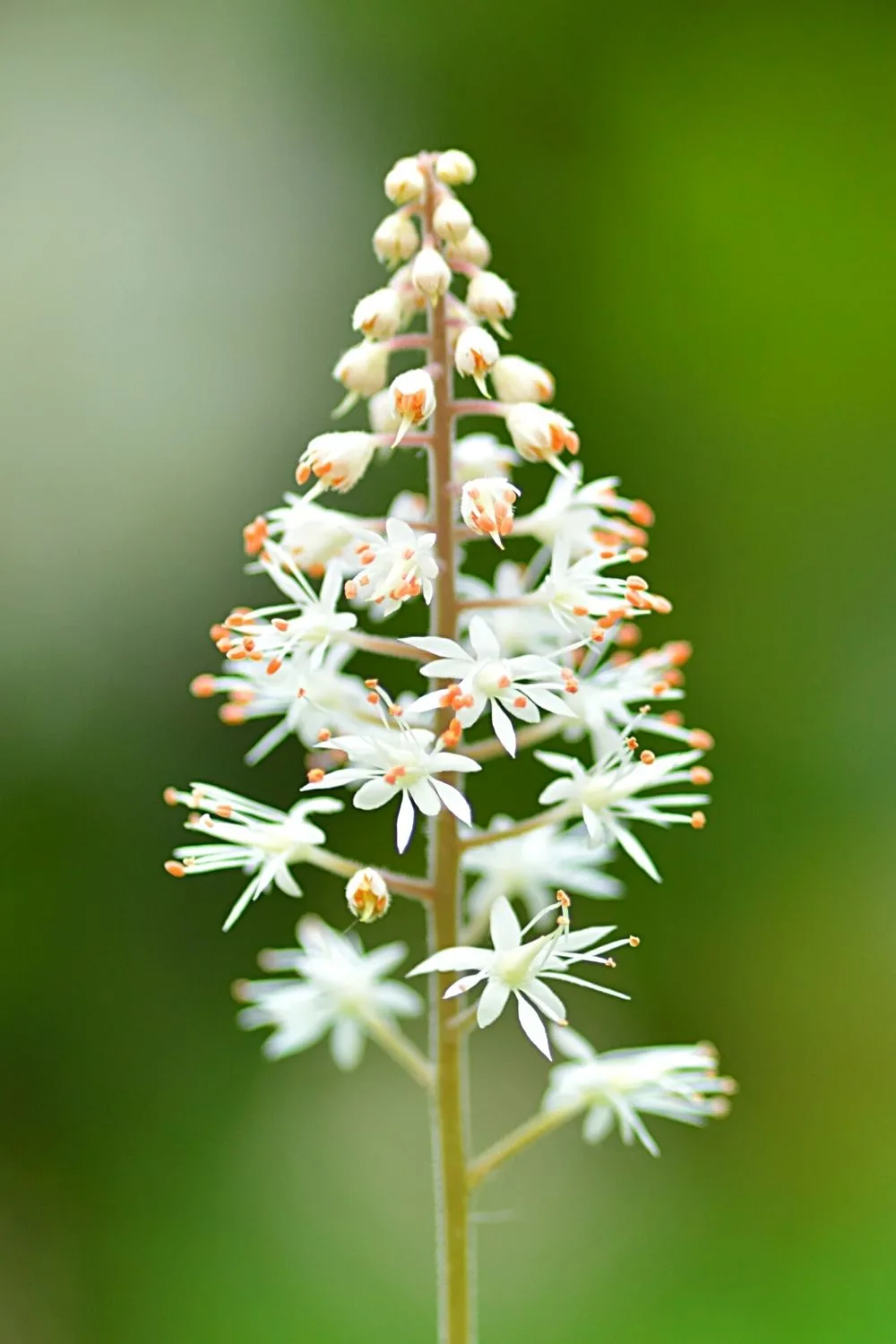
Tiarella Cordifolia, aka Foamflower, loves the shade that north-facing side of the hosue offers
Tiarella Cordifolia is also known as Foamflower that loves shade. Tiarella Cordifolia loves staying in partially shaded areas of your north-facing garden.
Moreover, the plants keep green all year round, satisfying your eye and senses.
Its binomial nomenclature and basic plant care requirements include:
- Scientific name: Tiarella cordifolia
- Family: Saxifrages
- Temperature: 70-75 degrees Fahrenheit
- Fertilizer: Water soluble fertilizers annually
- pH: 6.2 – 6.5
- Soil: Humusy loam and or chalked soil, rich with moisture content
- Lighting: Dappled Sunlight
- Growth rate: Average growth rate, 2-5 years required for the plant to attain maximum height
- Humidity: 30-90%
10. Heuchera

The pink flowers of the Heuchera offer a touch of color to the north-facing side of the house
Heuchera, commonly known as Coral Bells, adds a unique texture to your north-facing garden.
Blossomed pink flowers are the prime attraction of the plant, which doesn’t require 6-8 hours of daily sunshine, making it a perfect fit for your north-facing garden.
Its binomial nomenclature and basic plant care requirements include:
- Scientific name: Heuchera
- Family: Saxifrages
- Temperature: 59 to 64 degrees Fahrenheit
- Fertilizer: half-inch aged compost layer to be applied during springs only.
- Ph: 0 to 7.0
- Soil: Sandy and clayey soils
- Lighting: partial or low sunlight
- Growth rate: Quick (6months)
- Humidity: 40-90%
11. Astilbe
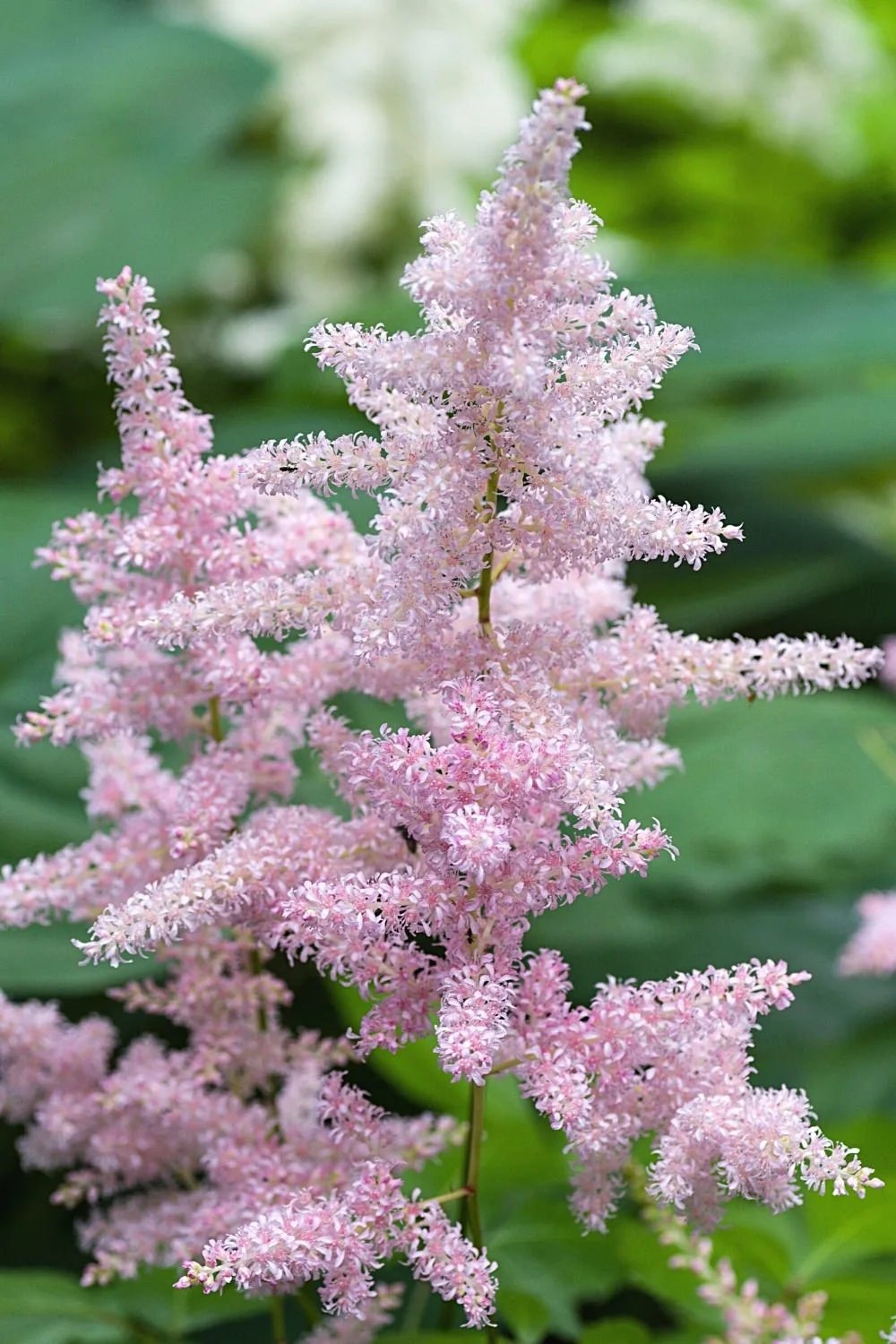
Astilbe, aka False Goat’s Beard, will thrive in the north-facing side of the house as they’re shade-loving plants
Astilbe, also known as False goat’s beard, is a shade-loving plant that has an eye-catching texture, height, and color.
Astilbe resembles candy pink spires fully. The foliage of Astilbe is like ferns, which are also an important pick for your north-facing gardens.
Its binomial nomenclature and basic plant care requirements include:
- Scientific name: Astilbe
- Family: Saxifrages
- Temperature: 65 to 75 degrees Fahrenheit
- Fertilizer: Fertilizers composed of 5-10-5 or 10-10-10 work best for Astilbe
- Ph: 8 to 6.2
- Soil: Sandy and clayey soils
- Lighting: low or partial sunlight
- Growth rate: Fast
- Humidity: 30-90%
12. Digitalis
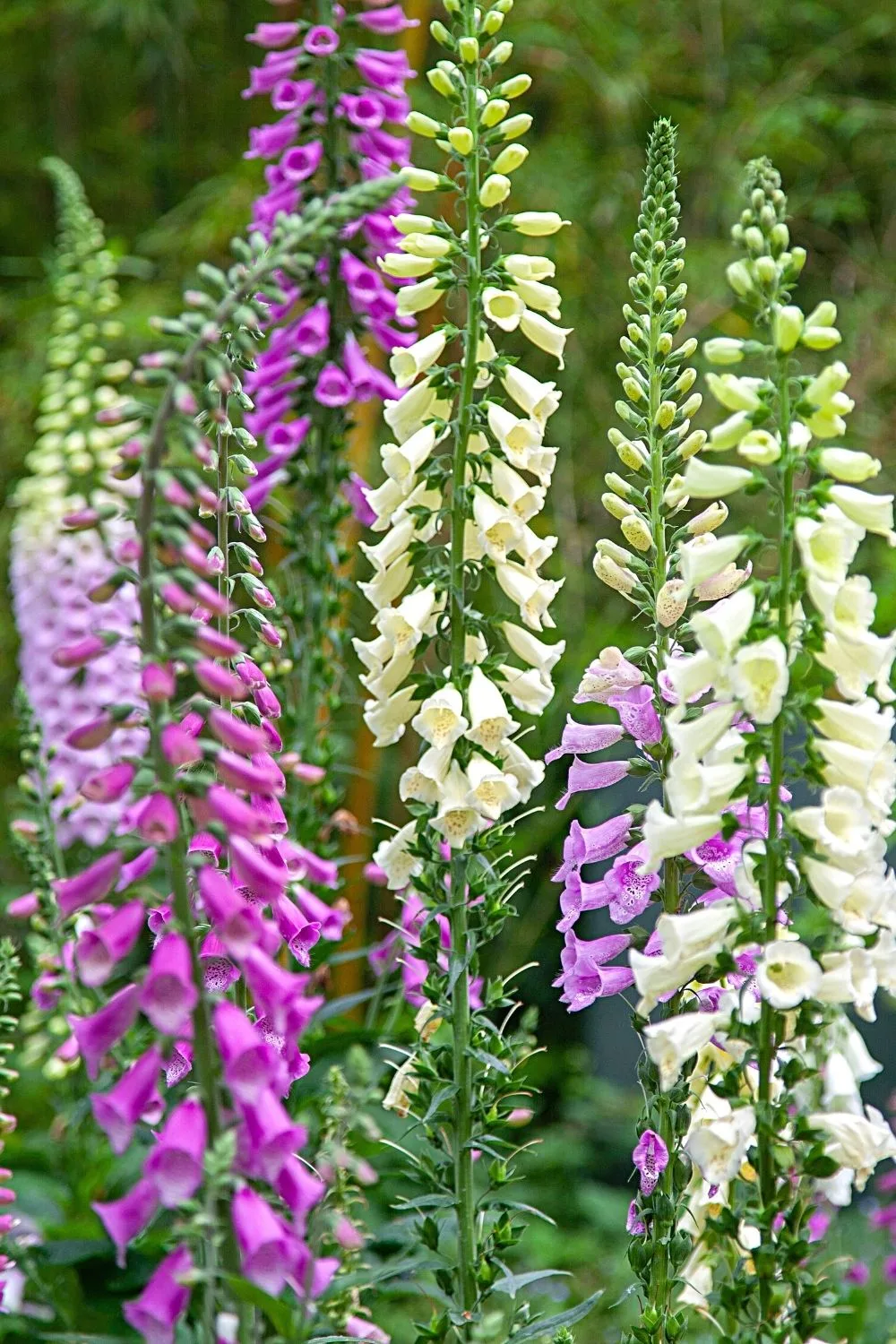
Aka Foxglove, Digitalis can thrive in full or partial shade conditions of the north-facing side of the house
Digitalis is also known as Foxglove, having the ability to withstand full or partial shade conditions.
During summers, Foxgloves produce pinkish-purple trumpet-shaped flowers, which add significant color to green spaces.
Its binomial nomenclature and basic plant care requirements include:
- Scientific name: Digitalis
- Family: Plantaginaceae
- Temperature: 40° – 65°F (4° – 16°C)
- Fertilizer: A inch of compost layer to be applied during the spring season only
- Ph: 4.5 to 8.3
- Soil: Loamy and well-drained soil
- Lighting: partial to full shade
- Growth rate: Fast- 4 months of planting
- Humidity: 10-50%
13. Lamium Maculatum
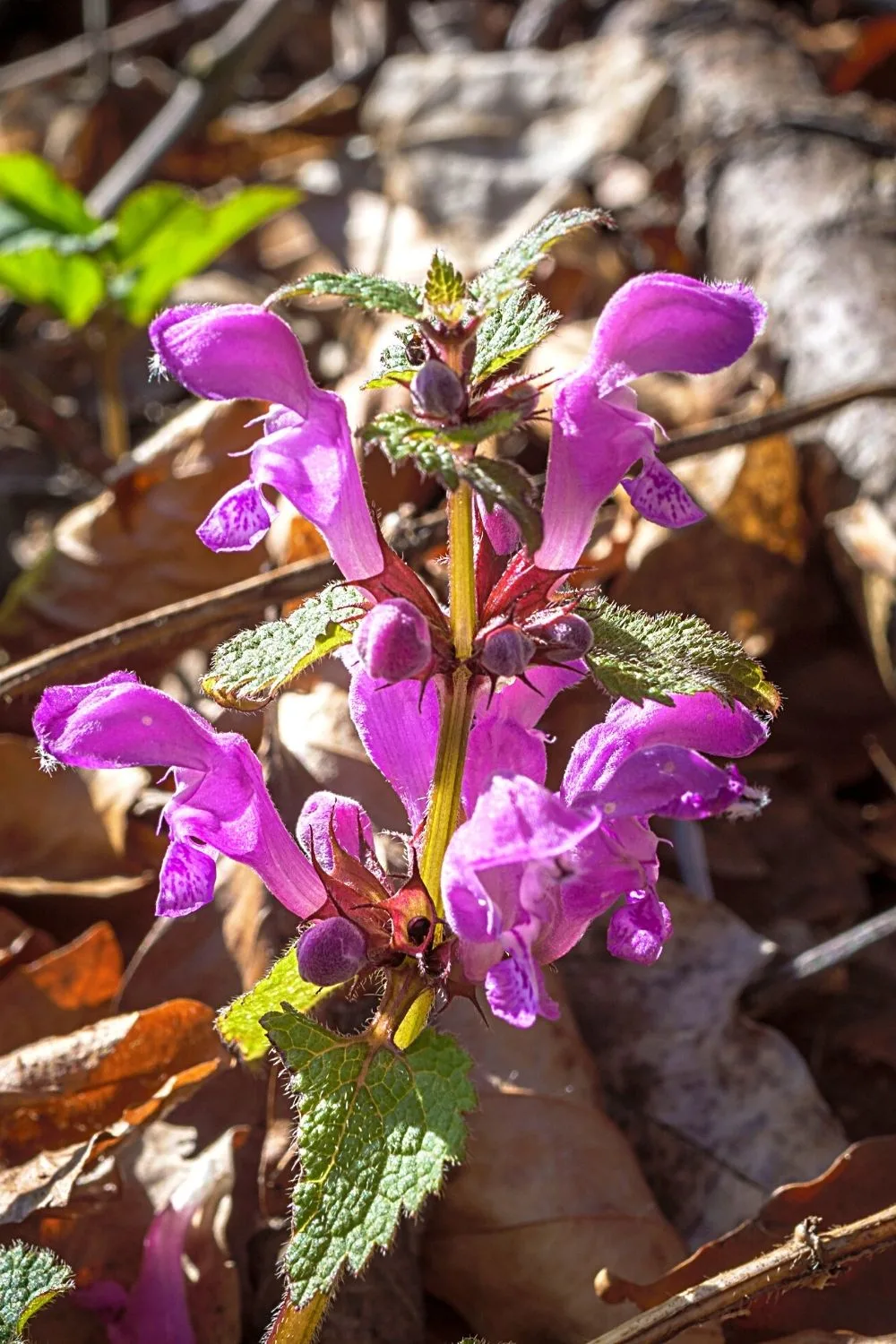
Lamium Maculatum loves the dark and damp areas of the north-facing side of the house
Lamium Maculatum, also known as Dead Nettle, is an ideal plant for dark and damp spots in your north-facing garden.
Lamium Maculatum is pretty easy to grow and doesn’t require much maintenance throughout the year. Colorful blooms would appear in the late spring season between April and May.
Its binomial nomenclature and basic plant care requirements include:
- Scientific name: Lamium maculatum
- Family: Mints
- Temperature: 65 to 70°F (18 to 21°C)
- Fertilizer: Creeping Lamium to be applied twice a year for boosting flower production
- Ph: 6.5 to 7.4
- Soil: moisture and well-drained
- Lighting: partial or full shade
- Growth rate: Slow
- Humidity: 30-80%
14. Virginia Creeper
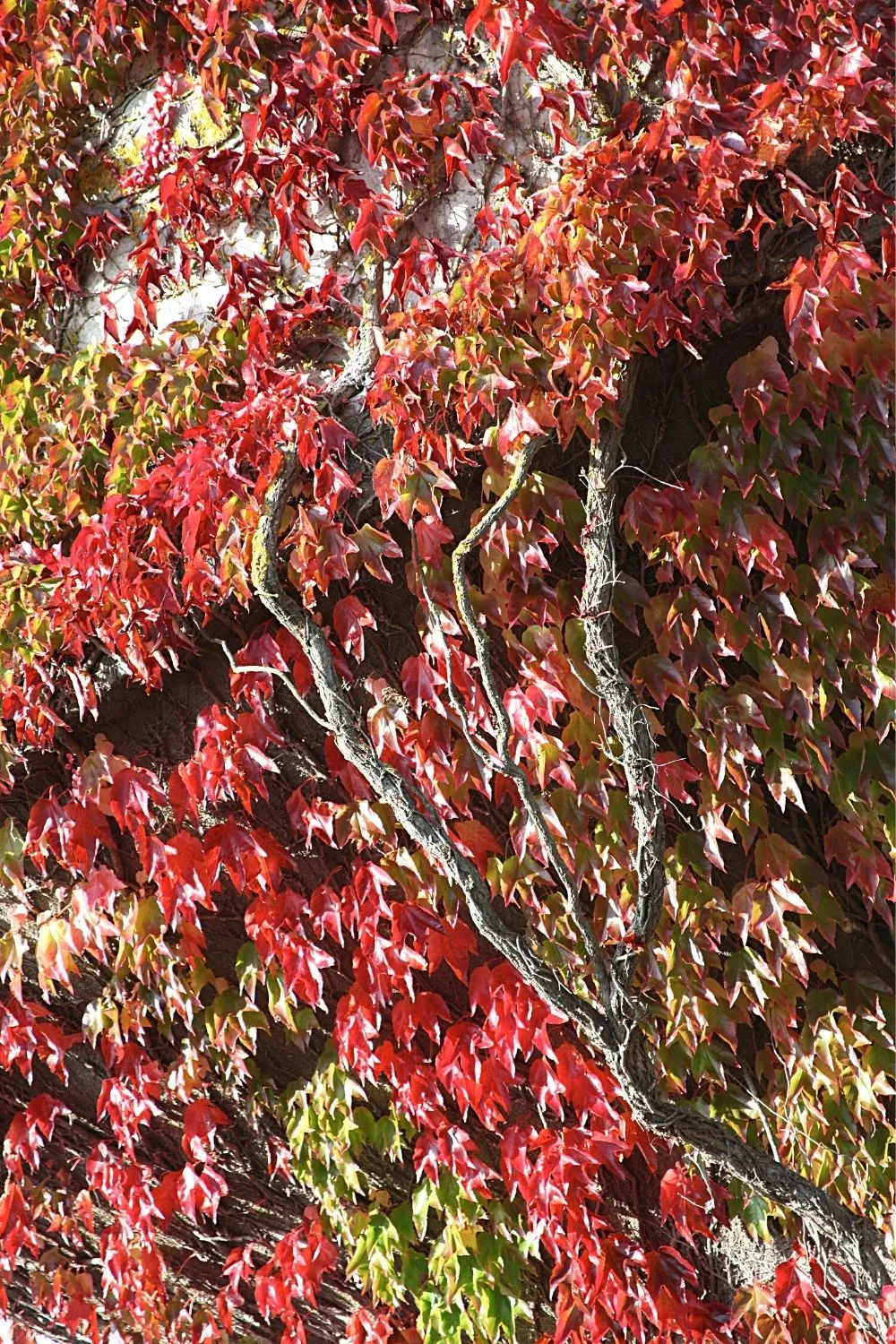
If you’re looking for an attractive creeping plant you can grow in the north-facing side of the house, Virginia Creeper is your plant of choice
Virginia Creeper is an attractive, vigorously growing plant, adding significant depth and reddish-brown colored schemes to your north-facing garden.
Virginia Creeper can grow under any soil conditions without any special care or attention throughout the year.
Its binomial nomenclature and basic plant care requirements include:
- Scientific name: Parthenocissus quinquefolia
- Family: Grapes
- Temperature: -10 to 10 degrees Fahrenheit
- Fertilizer: A thin layer of compost around its roots during spring only
- Ph: 5.1 to 7.3
- Soil: Sandy, Clay, Loamy
- Lighting: sun or full shade
- Growth rate: Average (4-5 inches per year)
- Humidity: 30-100%
15. Albéric Barbier
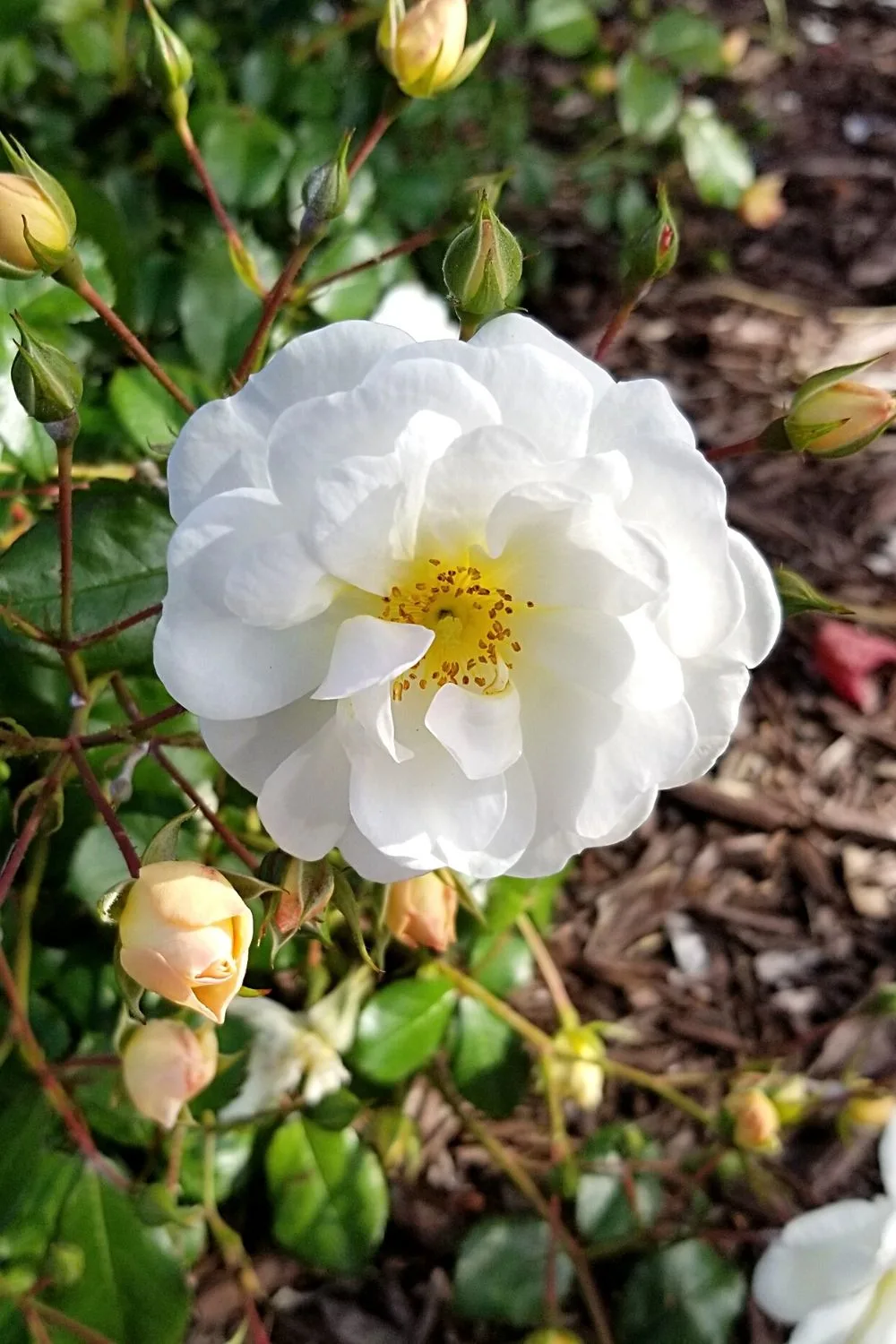
Albéric Barbier loves growing in the shade of the north-facing side of the house in any kind of fertile soil
Albéric Barbier is also known as the Rambling Rose, which has a fresh white flower with yellowish buds during the growing season.
Rambling Rose prefers growing in the shade all year round but needs any type of fertile soil to grow.
Its binomial nomenclature and basic plant care requirements include:
- Scientific name: Rosa ‘Albéric Barbier’
- Family: Rose family
- Temperature: -15°C minimum
- Fertilizer: Phosphorous rich fertilizer only
- Ph: 5.0 to 8.0
- Soil: Chalky, Loamy, Sandy
- Lighting: Full Sun or dappled shade
- Growth rate: Fast
- Humidity: 40-90%
16. Alchemilla
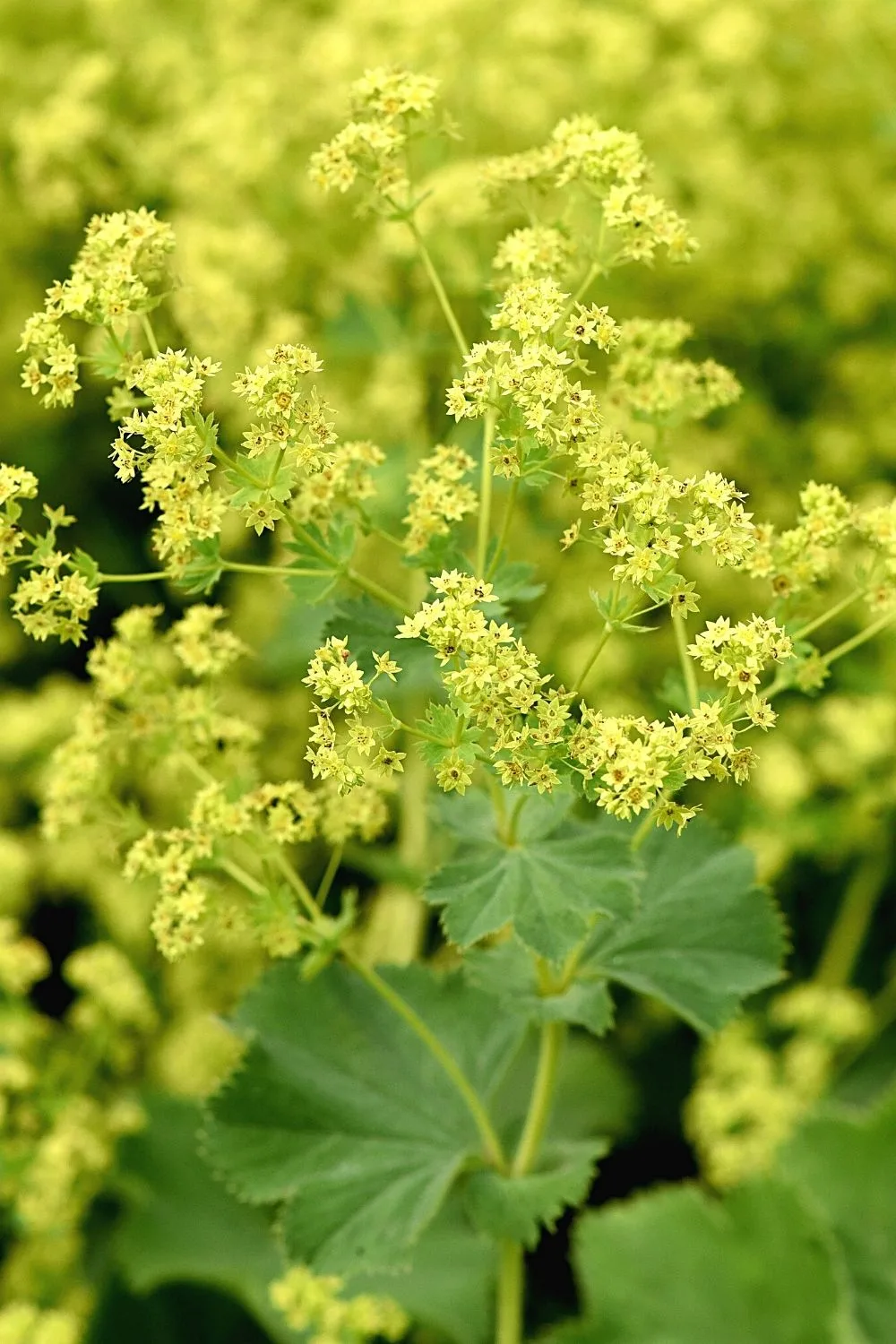
Alchemilla is a great cover plant for a garden that’s located in the north-facing side of the house
Alchemilla is also known as Lady’s mantle, which is of lush green color portraying just like exotic and sharp forests.
It can be placed on the ground in north-facing gardens as ground cover. Small greenish-yellow flowers add beauty to the entire ground cover during summers.
Its binomial nomenclature and basic plant care requirements include:
- Scientific name: Alchemilla
- Family: Rose family
- Temperature: 60 to 68°F (15—20°C)
- Fertilizer: No such fertilizers are required
- Ph: 6 to 7
- Soil: Chalk, Loam, Sand
- Lighting: Full Sun or partial shade on an average
- Growth rate: Slow
- Humidity: 30-70%
17. Pulmonaria
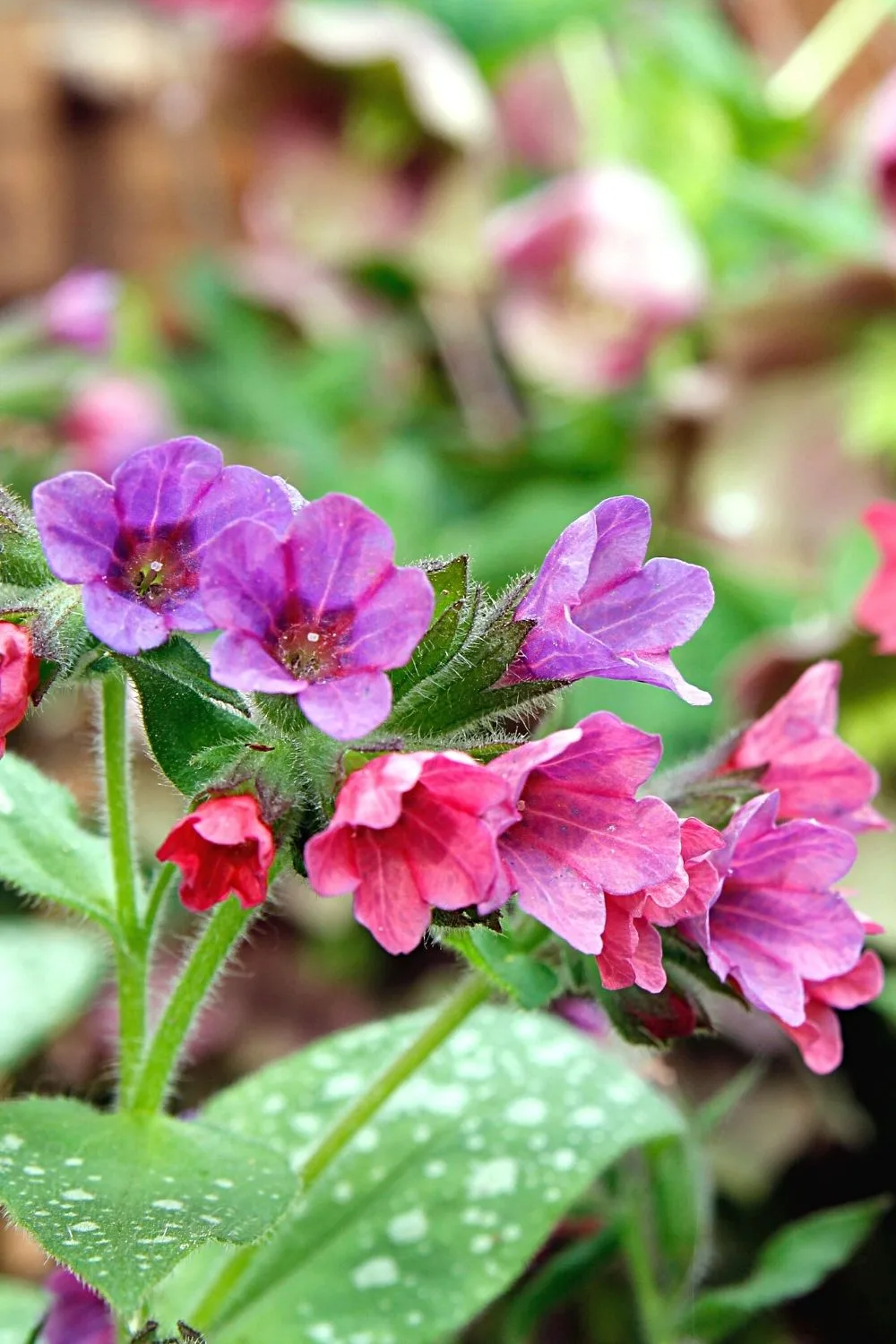
Pulmonaria, aka Lungwort, loves the darker areas of the north-facing side of the house
Pulmonaria plant, also known as Lungwort, loves staying in darker areas or corners of a garden.
Though the flowers have a weird name, they are certainly eye-catching when they blossom in blue. Their foliage has a dark greenish hue with a few white spots randomly spread over the surface.
Its binomial nomenclature and basic plant care requirements include:
- Scientific name: Pulmonaria
- Family: Boraginaceae
- Temperature: 60 to 65°F (15—18°C)
- Fertilizer: No such specific fertilizers. 10-10-10 common fertilizers would be sufficient
- Ph: 7 to 8
- Soil: Moist, Clayey, and well-drained
- Lighting: Full Sun or partial shade on an average
- Growth rate: Average
- Humidity: 60-90%
18. Itea Ilicifolia
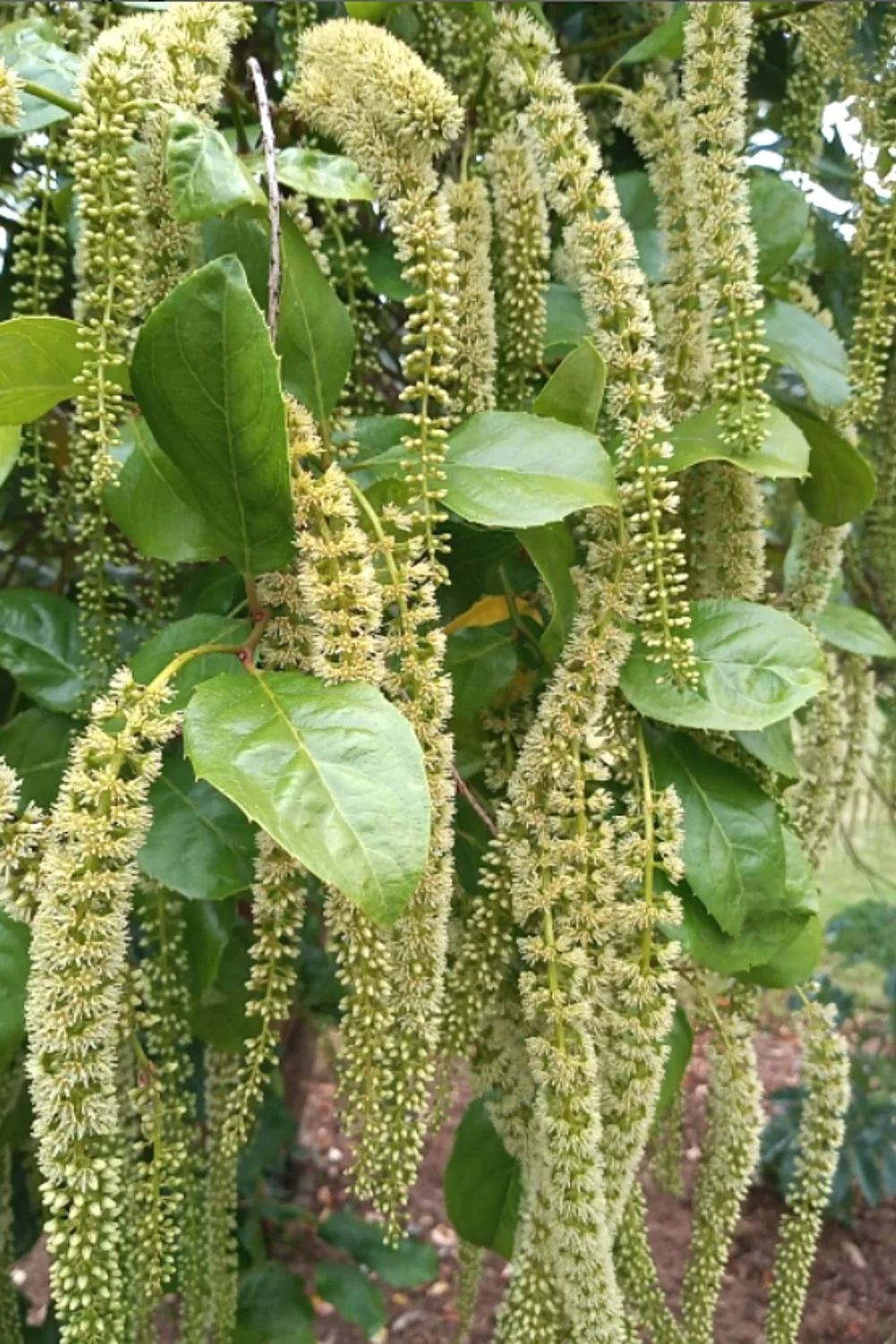
Photo Credit: @nicgardens on Instagram!
Itea ilicifolia, also known as holly-leaved sweet spires, are like holly shrubs with oval leaves, having an average height of 10cm.
Saplings of Itea Ilicifolia are planted in congestion, having greenish-white flowers.
Its binomial nomenclature and basic plant care requirements include:
- Scientific name: Itea Ilicifolia
- Family: Iteaceae
- Temperature: -15 to 20 ° C
- Fertilizer: Phosphorus rich fertilizers are needed during the growing season
- Ph: 5.5 to 7.5
- Soil: Fertile, moist, well-drained soil
- Lighting: Full Sun or partial shade light
- Growth rate: Slow
- Humidity: 40-80%
19. Madame Alfred Carrière’
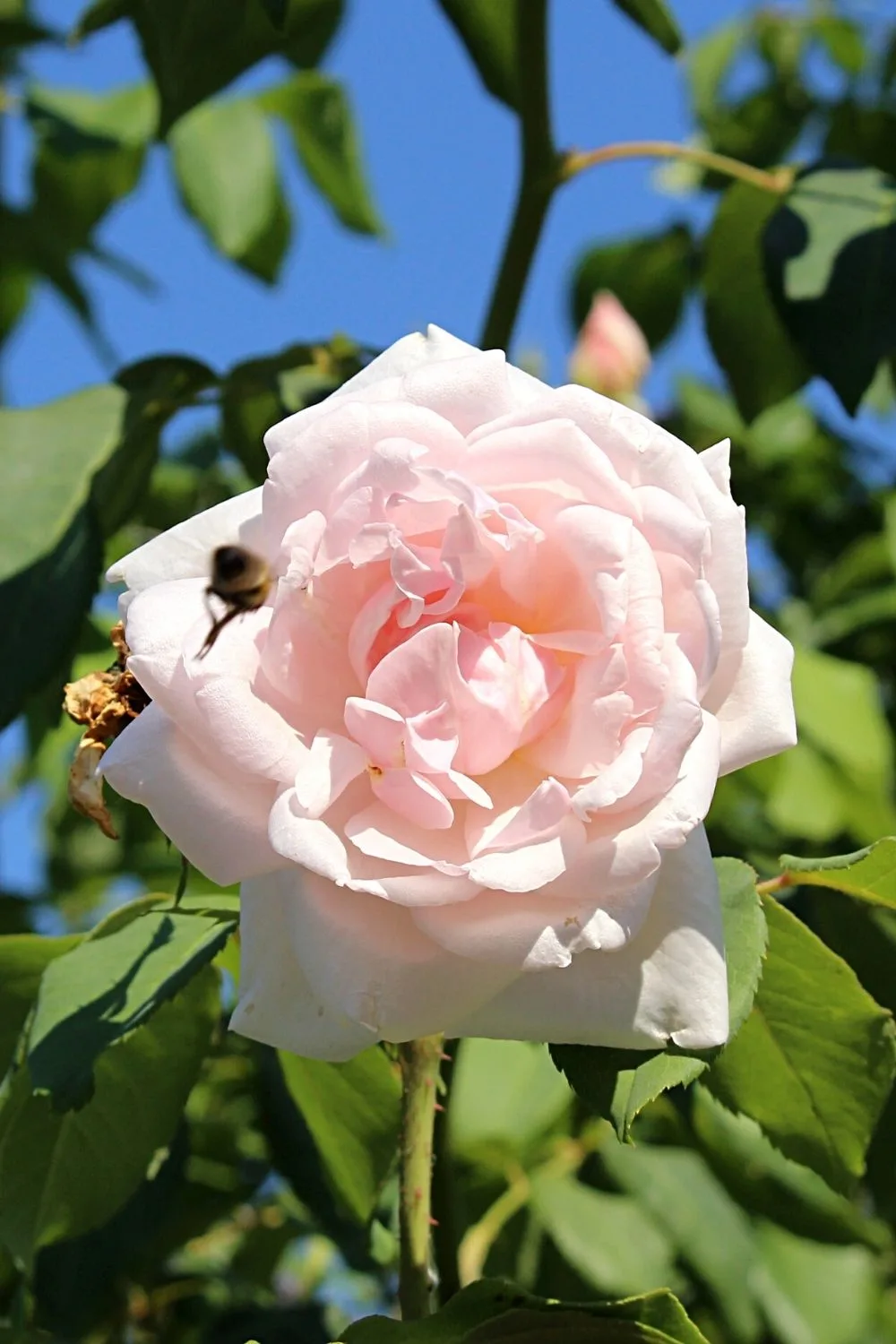
Madame Alfred Carrière’ grows white flowers all year round, which can appear pink-tinted on the north-facing side of the house
Madame Alfred Carrière’ or Climbing Rose has white blossoms throughout the season, making it look like tinted pink roses.
According to its specifications, it only flowers when it has reached a suitable size.
Its binomial nomenclature and basic plant care requirements include:
- Scientific name: Rosa
- Family: Noisette rose
- Temperature: 10-15 degrees Fahrenheit
- Fertilizer: Organic fertilizer rich in NPK proportion
- Ph: 6.5
- Soil: Chalk, Clay, Loam, Sandy
- Lighting: Full Sun or partial shade
- Growth rate: Slow (2-3years)
- Humidity: 50-90%
20. Hedera helix ‘Ceridwen’
Hedera helix ‘Ceridwen’ are evergreen plants that can be hinged or placed at any level of a north-facing garden.
Hedera helix ‘Ceridwen’ is the best pick if you love having glossy leaves in your garden.
Its binomial nomenclature and basic plant care requirements include:
- Scientific name: Ceridwen
- Family: Araliaceae
- Temperature: 65-97 degrees Fahrenheit
- Fertilizer: Organic fertilizer rich in Phosphorous
- Ph: 5.5 to 6.5
- Soil: Sandy, Clayey, Loamy
- Lighting: Full Sun or partial shade
- Growth rate: average (9ft per year)
- Humidity: 25-50%
21. Pyracantha Saphyr Rouge

Pyracantha Saphyr Rouge offers a reddish-green coloration in your north-facing side of the house
This Sharp and narrow leaves plant for the north-facing garden has a unique reddish-green color combination.
Shrubs can be hinged with supports on elevations for better display and growth.
Its binomial nomenclature and basic plant care requirements include:
- Scientific name: Pyracantha
- Family: Rosaceae
- Temperature: -18°C minimum
- Fertilizer: 2-3 ounces of general-purpose fertilizer in late winters.
- Ph: 5-7.5
- Soil: Chalk, Clay, Loam, Sand
- Lighting: Full Sun or partial shade
- Growth rate: Slow (10-20 years)
- Humidity: 60-90%
22. Celastrus Orbiculatus
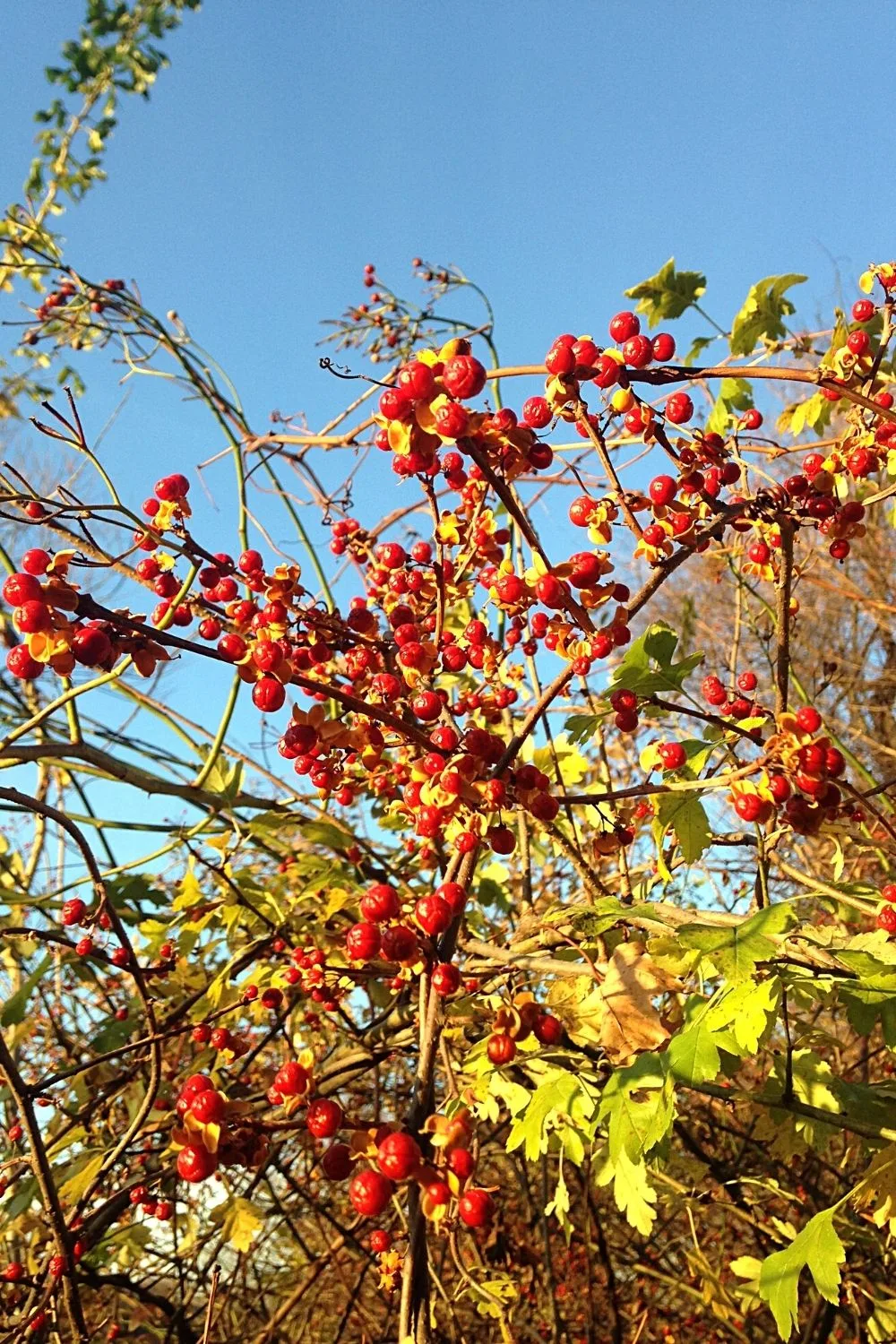
Celastrus Orbiculatus, aka Chinese Bittersweet, is one great plant you can add to the north-facing side of the house
Celastrus orbiculatus, known as Chinese bittersweet, is a deciduous, twining woody vine that may reach a height of 60 feet and has a stem diameter of up to four inches.
It’s the best fit for north-facing gardens and outdoor spots.
Its binomial nomenclature and basic plant care requirements include:
- Scientific name: Celastrus orbiculatus
- Family: Celastraceae
- Temperature: above 50°F
- Fertilizer: rich nutrient fertilizer depending upon irrigation time
- Ph: 6-6.5
- Soil: Well-drained soil
- Lighting: Full Sun or Partial Sun
- Growth rate: Slow (10-20 years)
- Humidity: 40-80%
23. Euonymus Fortunei
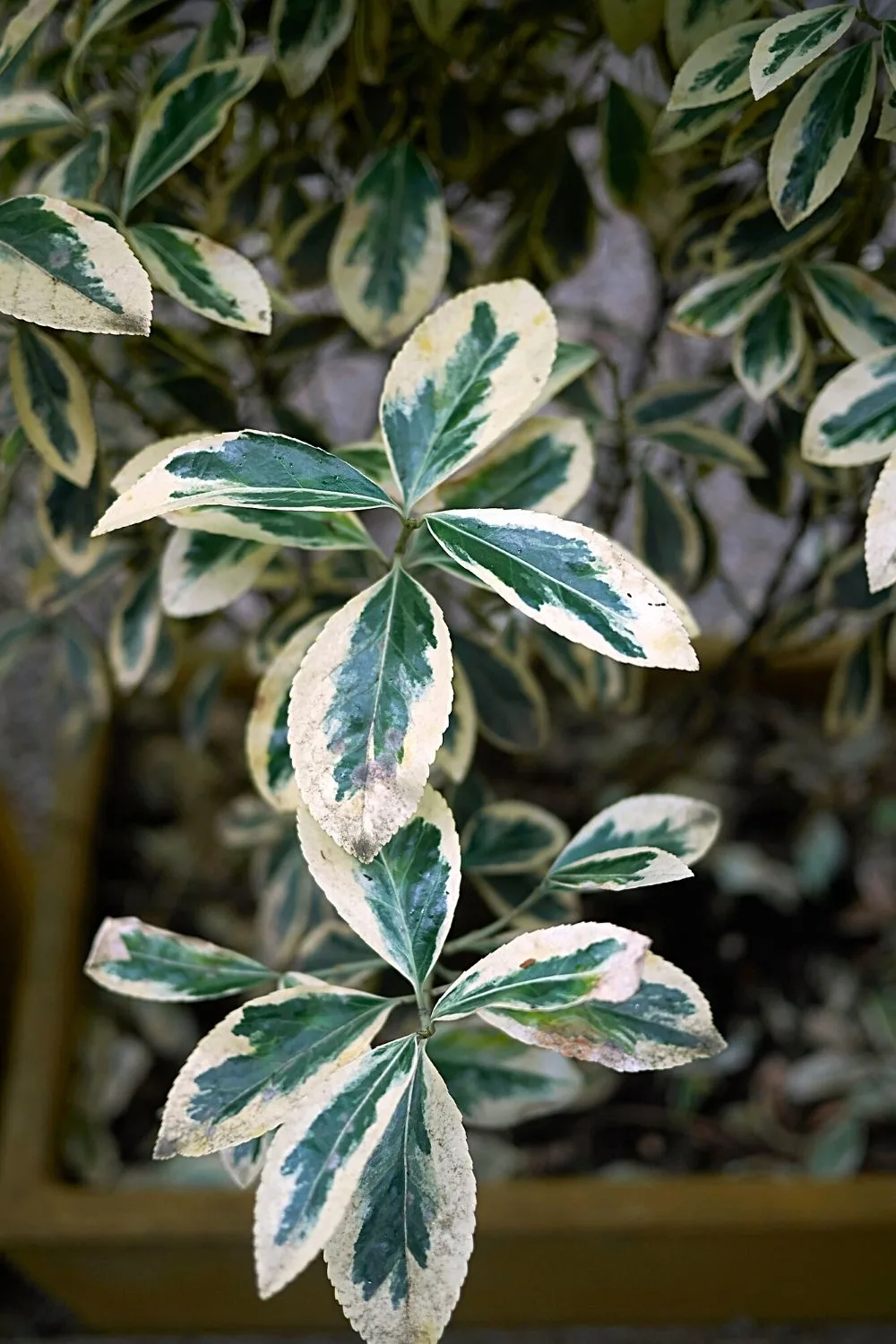
Euonymus Fortunei is a greenish, small white flower you can grow in the north-facing side of the house
Euonymus Fortune is a greenish, small white flower, having four petals that keep blossoming and changing colors throughout the season.
Its binomial nomenclature and basic plant care requirements include:
- Scientific name: Euonymus fortunei
- Family: Staff-vine family
- Temperature: -12°C minimum
- Fertilizer: Granular fertilizers per 100 sq ft of the bed
- Ph: 6-8
- Soil: dry to moist soil
- Lighting: Shaded or partial Sun
- Growth rate: Slow (13-24 inches per year)
- Humidity: 60-80%
24. Begonia Semperflorens Cultorum
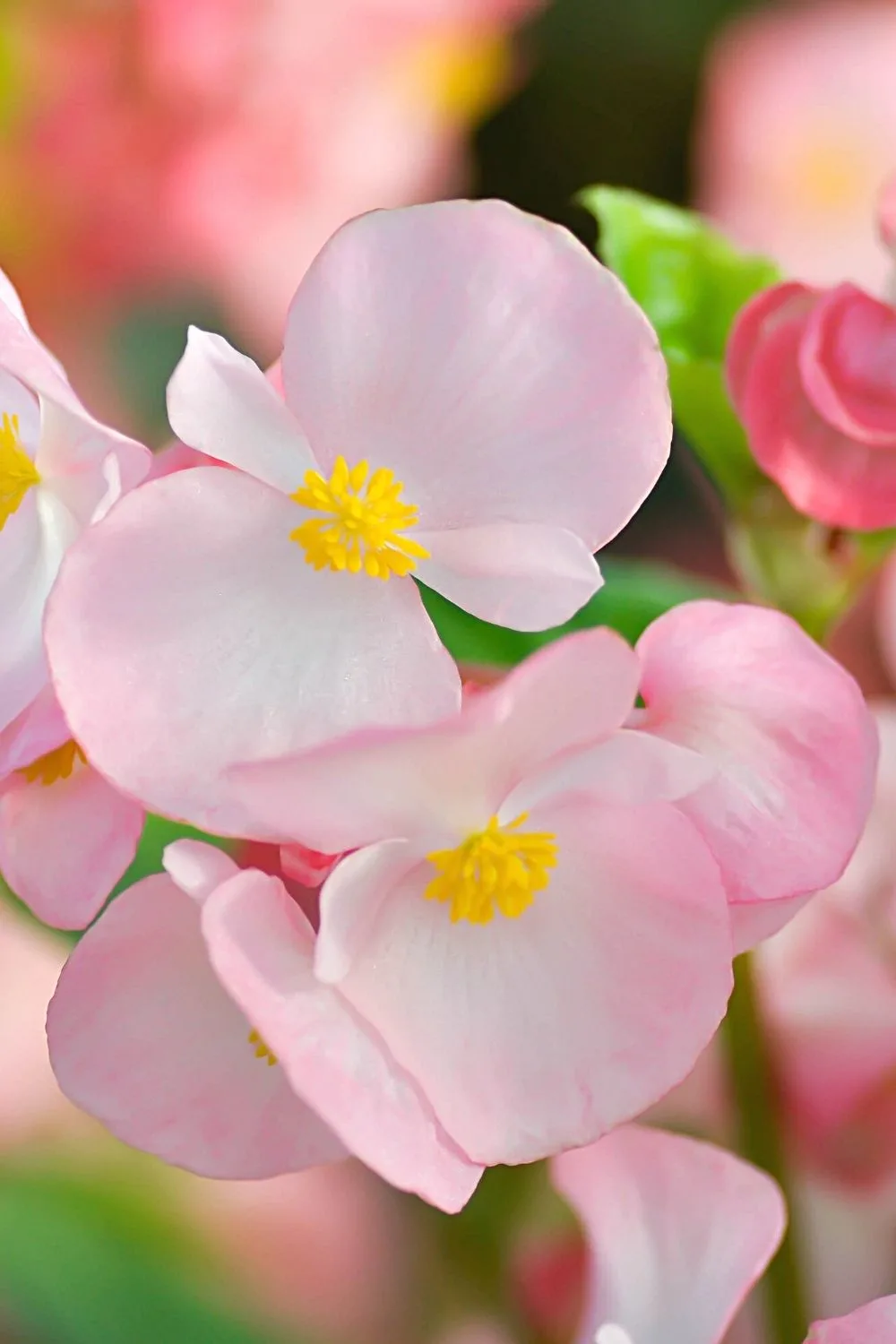
Begonia Semperflorens Cultorum adds a splash of color to the dark and shady corners of the north-facing side of the house
Begonia Semperflorens Cultorum, also known as Wax begonia, is a succulent, mounded, and fibrously rooted plant with loose clusters of blossoming pinkish flowers.
These are best for north-facing directions and dull spots in houses.
Its binomial nomenclature and basic plant care requirements include:
- Scientific name: Begonia x semperflorens-cultorum
- Family: Begoniaceae
- Temperature: 60ºF (16ºC) to 75ºF (24ºC)
- Fertilizer: 10-10 fertilizer in 3:1 ratio, water, and fertilizer
- Ph: 2 – 6.0
- Soil: Sandy loamy soil
- Lighting: partially shaded or dull
- Growth rate: Average
- Humidity: 70-90%
25. Impatiens Walleriana
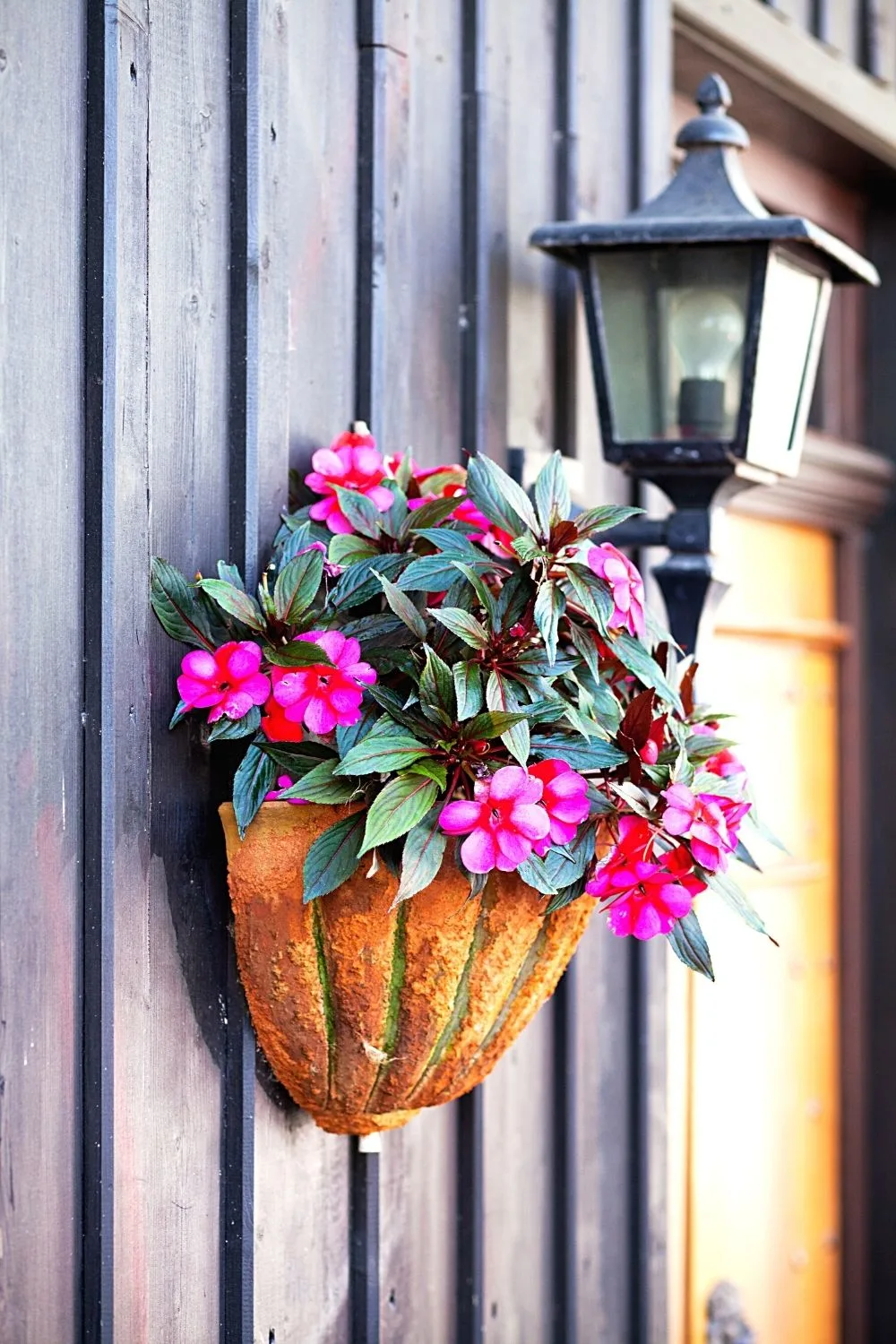
Impatiens Walleriana is another colorful and attractive plant you can grow in the north-facing side of the house
Impatiens Walleriana is also known as busy Lizzie or Sultana.
These are undoubtedly popular and abundant north-facing plants that catch the attention of every individual who walks nearby the garden.
Its binomial nomenclature and basic plant care requirements include:
- Scientific name: Impatiens walleriana
- Family: Balsaminaceae
- Temperature: 65 to 70 degrees Fahrenheit
- Fertilizer: 10-10-10 granular fertilizer
- Ph: 0 to 6.2
- Soil: Rich in mineral and well-drained soil
- Lighting: light or medium shade
- Growth rate: Average
- Humidity: 95-100%
26. Lamprocapnos Spectabilis
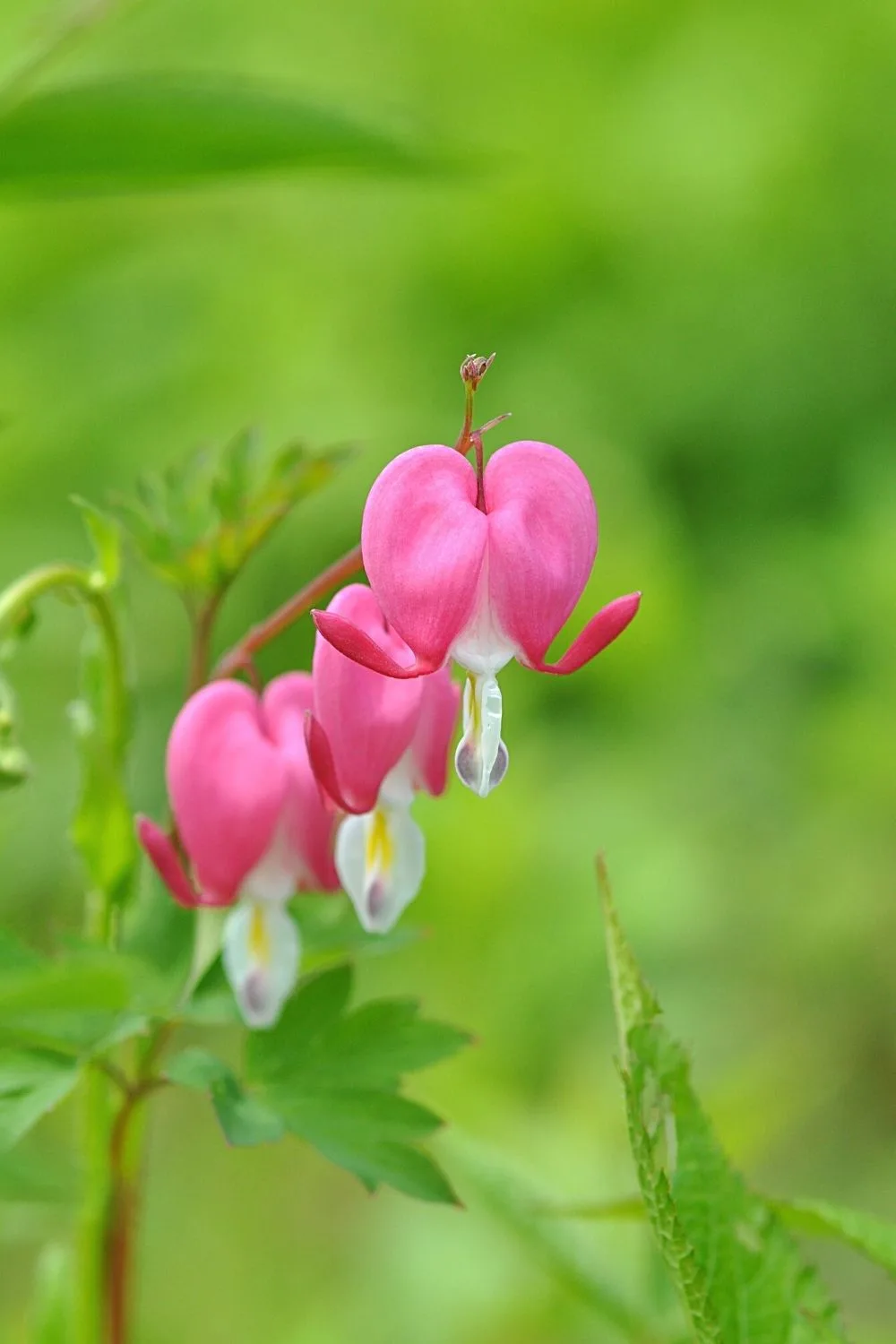
Lamprocapnos Spectabilis is a unique plant that you can grow in the north-facing side of the house
Lamprocapnos Spectabilis is like fallopian buds in a bleeding heart texture, which is utterly unique.
They can grow between 30-and 36 inches, offering great color and diversification to your north-facing garden.
Its binomial nomenclature and basic plant care requirements include:
- Scientific name: Lamprocapnos
- Family: Poppies
- Temperature: 55 to 75 degrees Fahrenheit
- Fertilizer: Compost or water-based fertilizer if required
- Ph: 0 to 6.5
- Soil: water-permeable, humid, and slightly calcareous soils
- Lighting: light shade
- Growth rate: medium
- Humidity: 40-90%
27. Vinca Minor
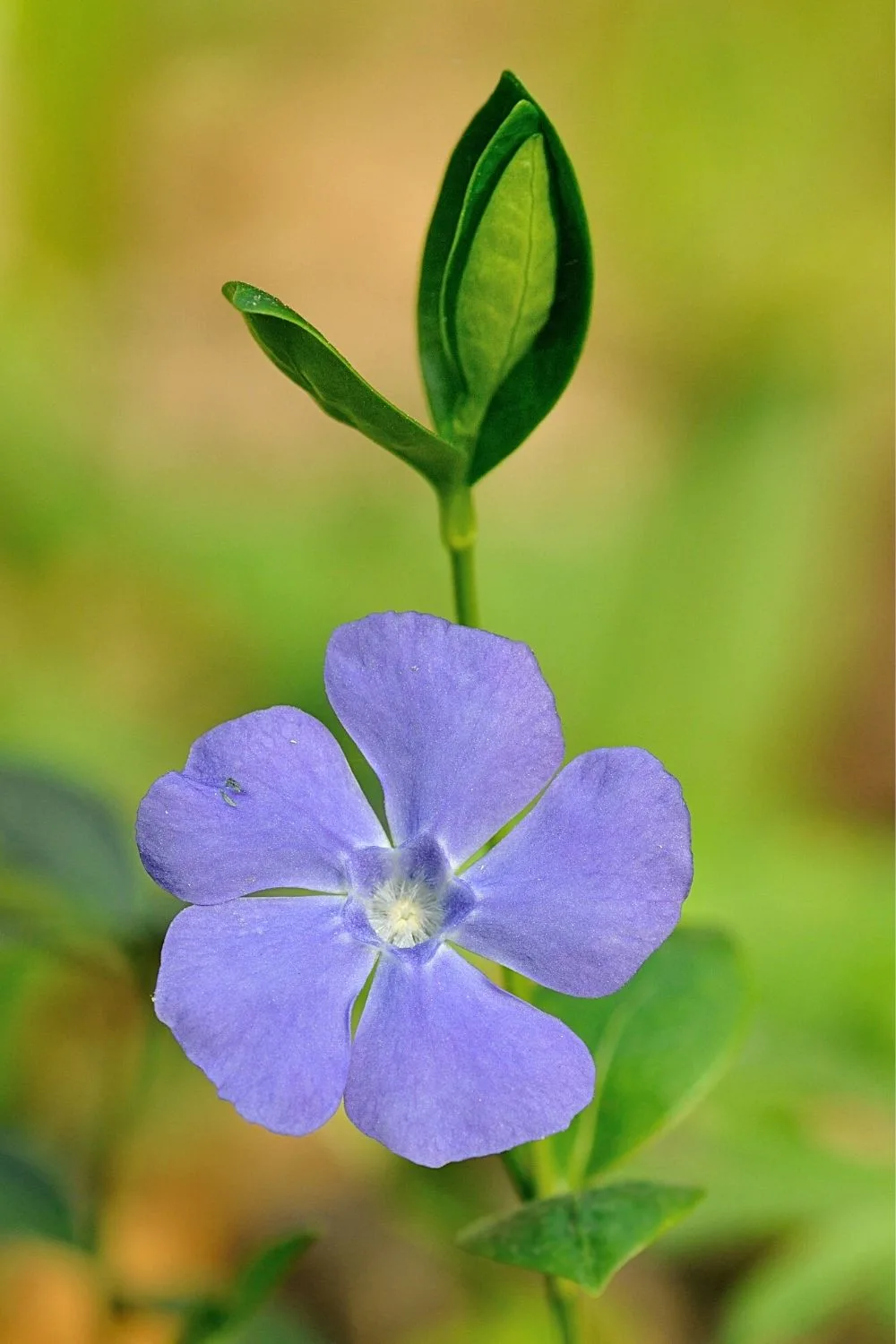
Vinca Minor is a low-maintenance plant you can grow in the north-facing side of the house
Vinca Minor requires minimum maintenance throughout the year and is drought-resistant.
They can be placed in bright sunlight or away from the sun in a North-facing direction. It’s among the best pick for your north-facing garden.
Years back, Vinca Minor was used to treat heavy menstrual bleeding in women and nosebleeds.
Its binomial nomenclature and basic plant care requirements include:
- Scientific name: Vinca minor
- Family: Dogbanes
- Temperature: 24 to 38 °C (75 to 100 °F) daytime 20 to 24 °C (68 to 75 °F) nighttime
- Fertilizer: Fertilizers with Bio-tone microbes are recommended
- Ph: 5.0 to 8.0
- Soil: Loamy, sandy, clay
- Lighting: Full light, partial light, under the shade
- Growth rate: medium
- Humidity: 30-90%
28. Fuchsia

Fuchsia is another colorful plant you can grow in the north-facing side of the house
Fuchsia is among the plants which can be easily grown and maintained in compact indoor and outdoor gardens.
Fuchsia does not like withstanding hot temperatures and hot spells of heat. They can be watered throughout the day, but they prefer staying in the shade or a cool environment.
Its binomial nomenclature and basic plant care requirements include:
- Scientific name: Fuchsia
- Family: Evening primroses
- Temperature: between 55 and 80 degrees Fahrenheit
- Fertilizer: use 20-20-20, a well-balanced fertilizer
- Ph: 5.5-6.2
- Soil: Moist but well-drained
- Lighting: partial or complete shade
- Growth rate: slow (1-2ft per year)
- Humidity: 40% or higher
29. Rhododendrons
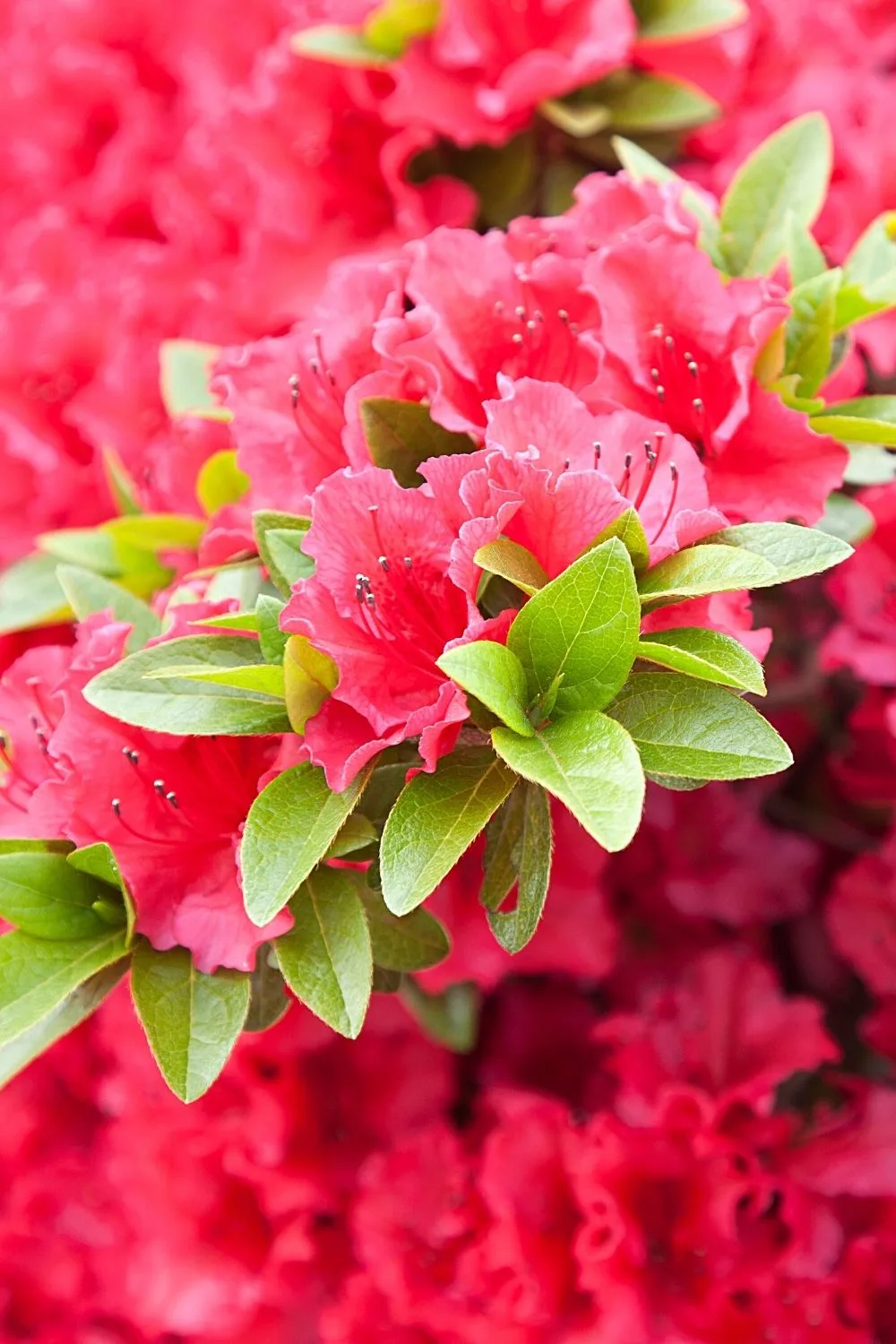
Rhododendrons love the dappled sunlight that north-facing side of the house offers
Rhododendrons are attractive shrubs and evergreen flowering plants which prefer having dappled sunshine. However, to see flowers blossoming, you need to wait till spring.
Its binomial nomenclature and basic plant care requirements include:
- Scientific name: Rhododendron
- Family: Ericaceae
- Temperature: -37 to 40°C
- Fertilizer: 10-8-6 fertilizer only in spring
- Ph: 4.5-6.0
- Soil: Organic or self-composed soils
- Lighting: partial or dappled shade
- Growth rate: slow (2ft per year)
- Humidity: 45-85%
30. Fragrant Catkins
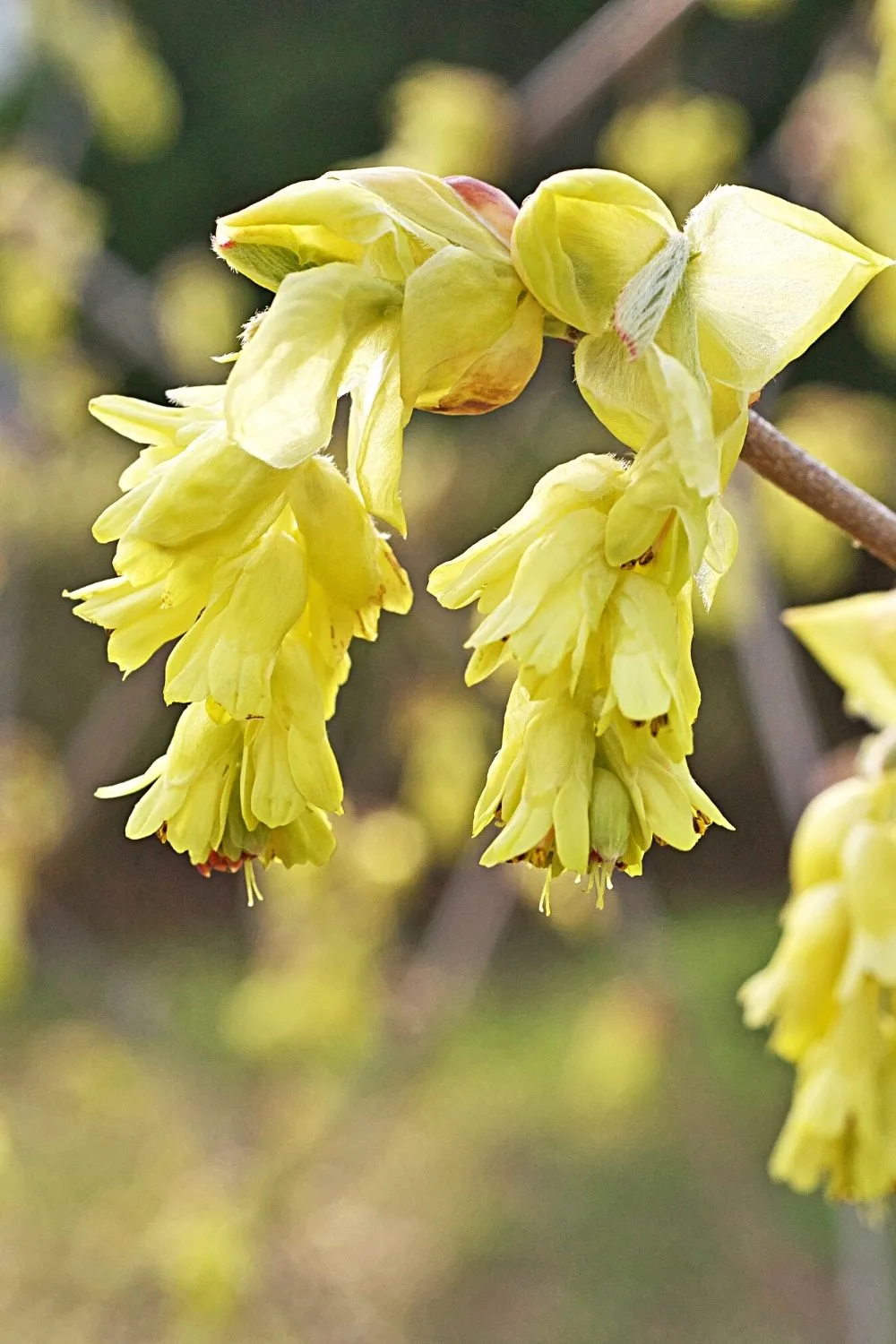
Fragrant Catkins give a light sweet fragrance to the north-facing side of the garden
Fragrant Catkins are among the flowers that give light sweet fragrance. The spongy-like figure is the main feature of their entire display.
The foliage and small pollen keep changing colors on its main structure all year round.
Its binomial nomenclature and basic plant care requirements include:
- Scientific name: Corylopsis pauciflora
- Family: Rhus aromatica
- Temperature: 15–25 °C
- Fertilizer: depends upon the botanist
- Ph: 5.0 to 7.5
- Soil: Moisture and dry
- Lighting: partial or dappled shade
- Growth rate: slow (takes ten years to grow full size)
- Humidity: 40-90%
Conclusion About Plants for North-Facing Side of the House
Plants and flowers can be placed in indoor and outdoor gardens, depending upon their physical and chemical requirements.
Selecting the most appropriate species of plants can help improve the internal temperature and environment of a home.
There’s a slight misconception about the positioning of plants, as many plants prefer staying in the shade and not in the sunlight.
These plants can be placed on the north side of a house.

Daniel has been a plant enthusiast for over 20 years. He owns hundreds of houseplants and prepares for the chili growing seasons yearly with great anticipation. His favorite plants are plant species in the Araceae family, such as Monstera, Philodendron, and Anthurium. He also loves gardening and is growing hot peppers, tomatoes, and many more vegetables.

